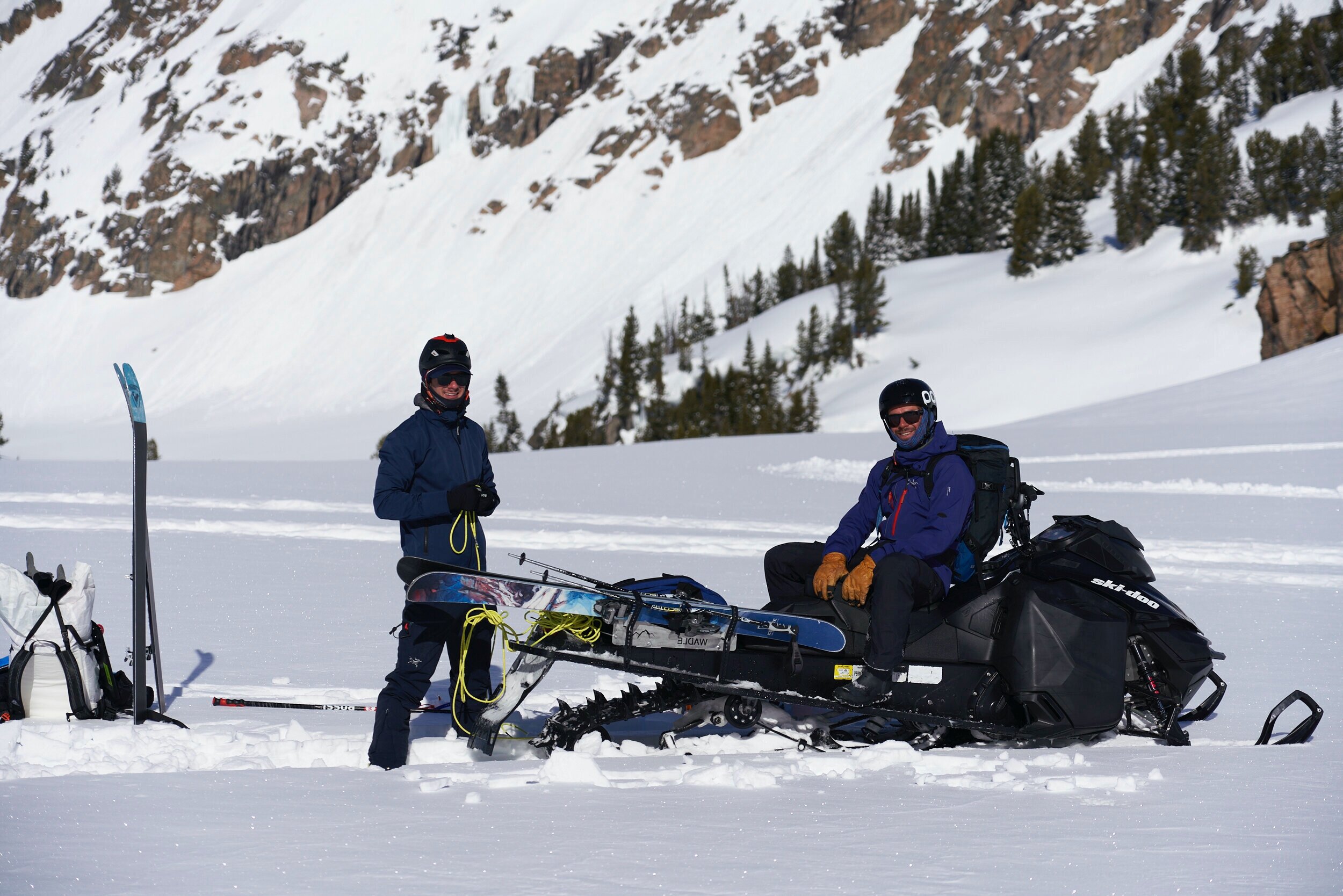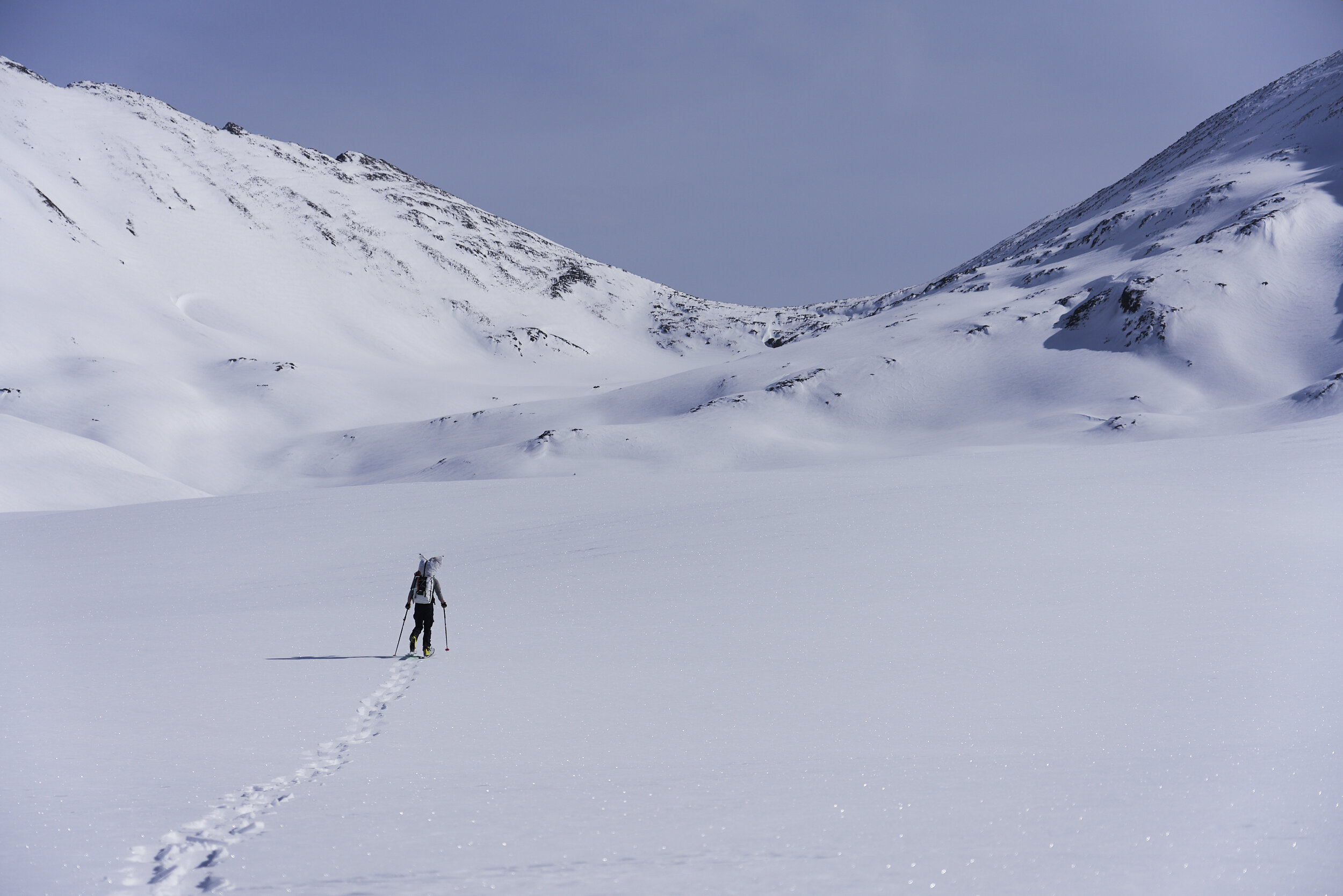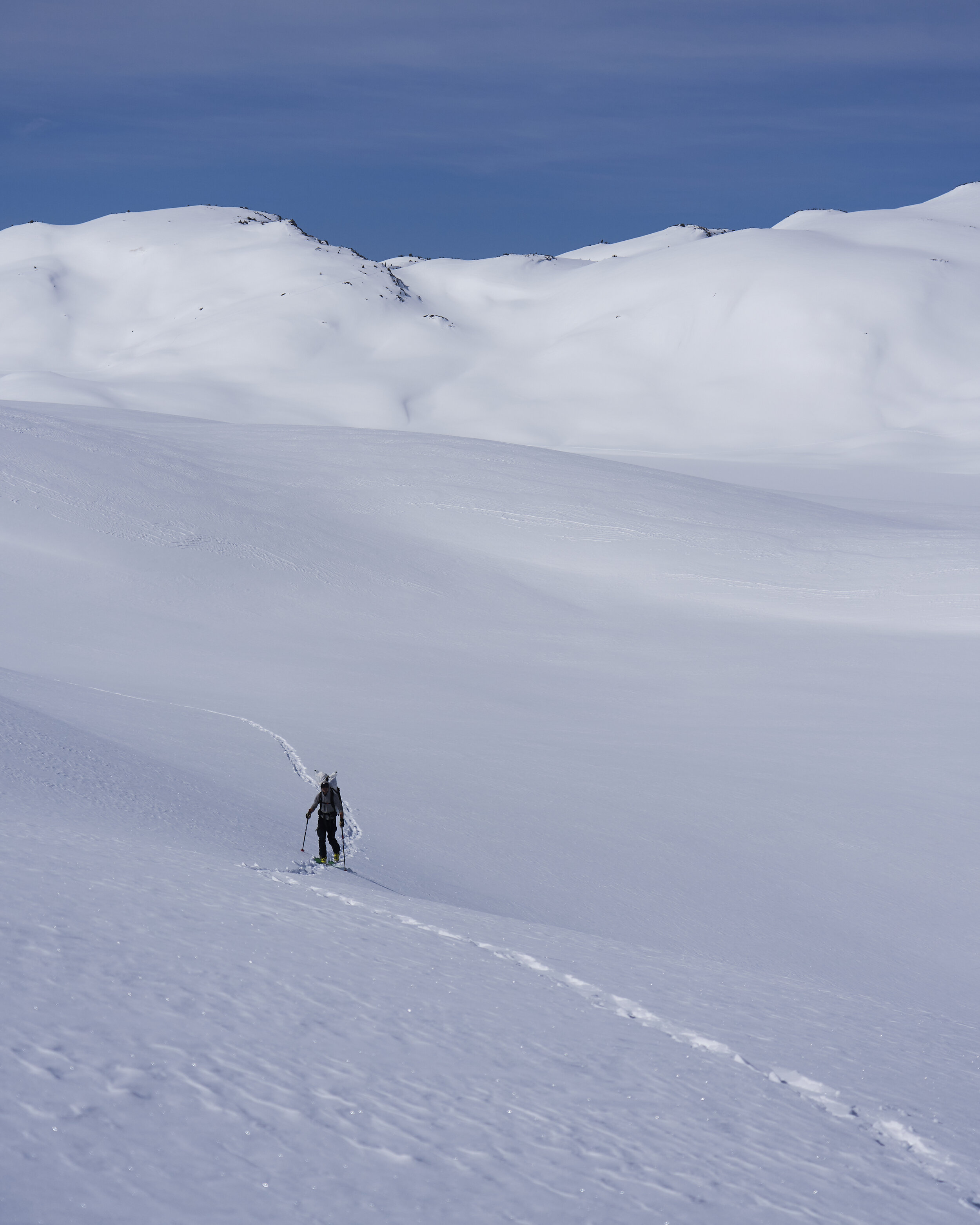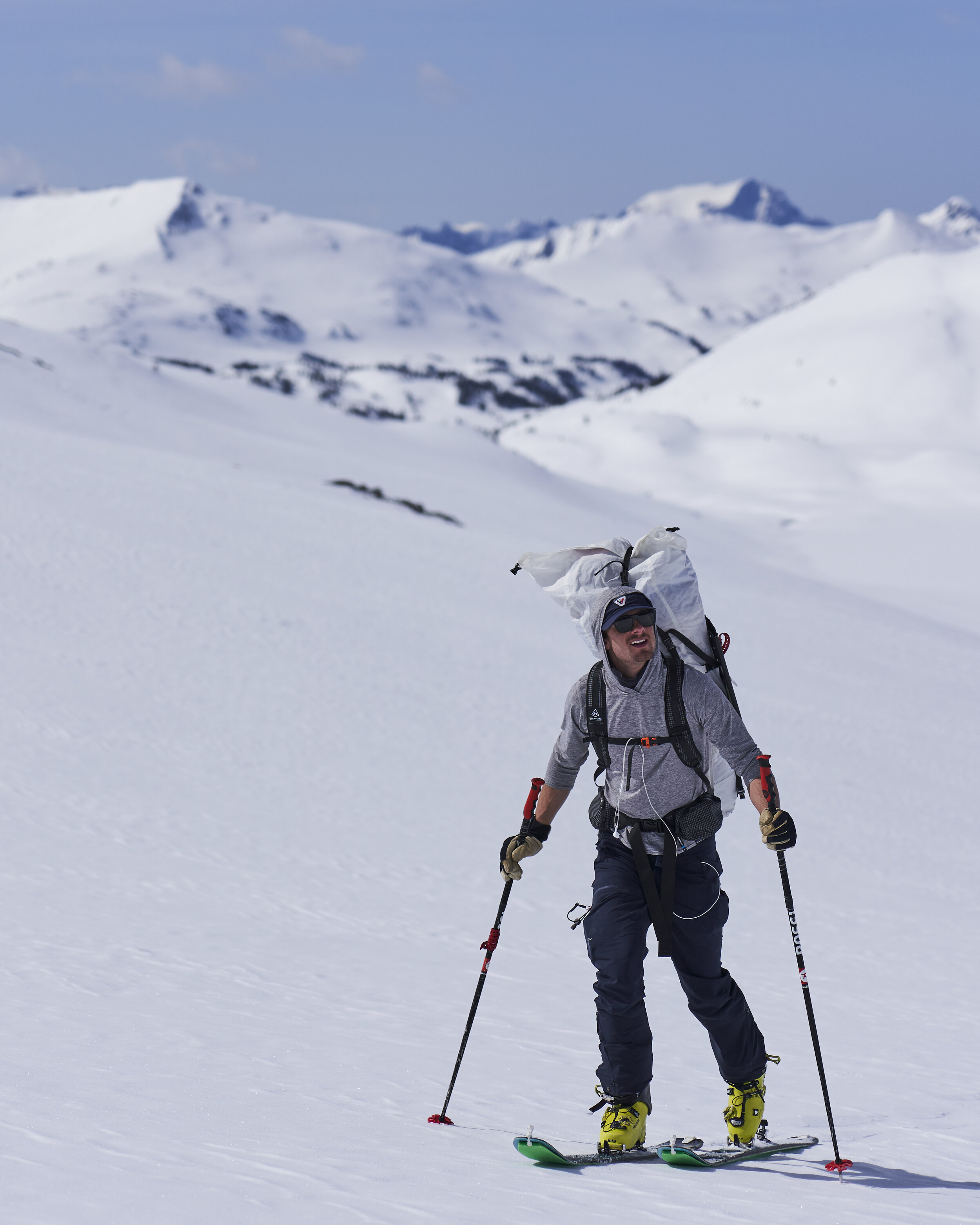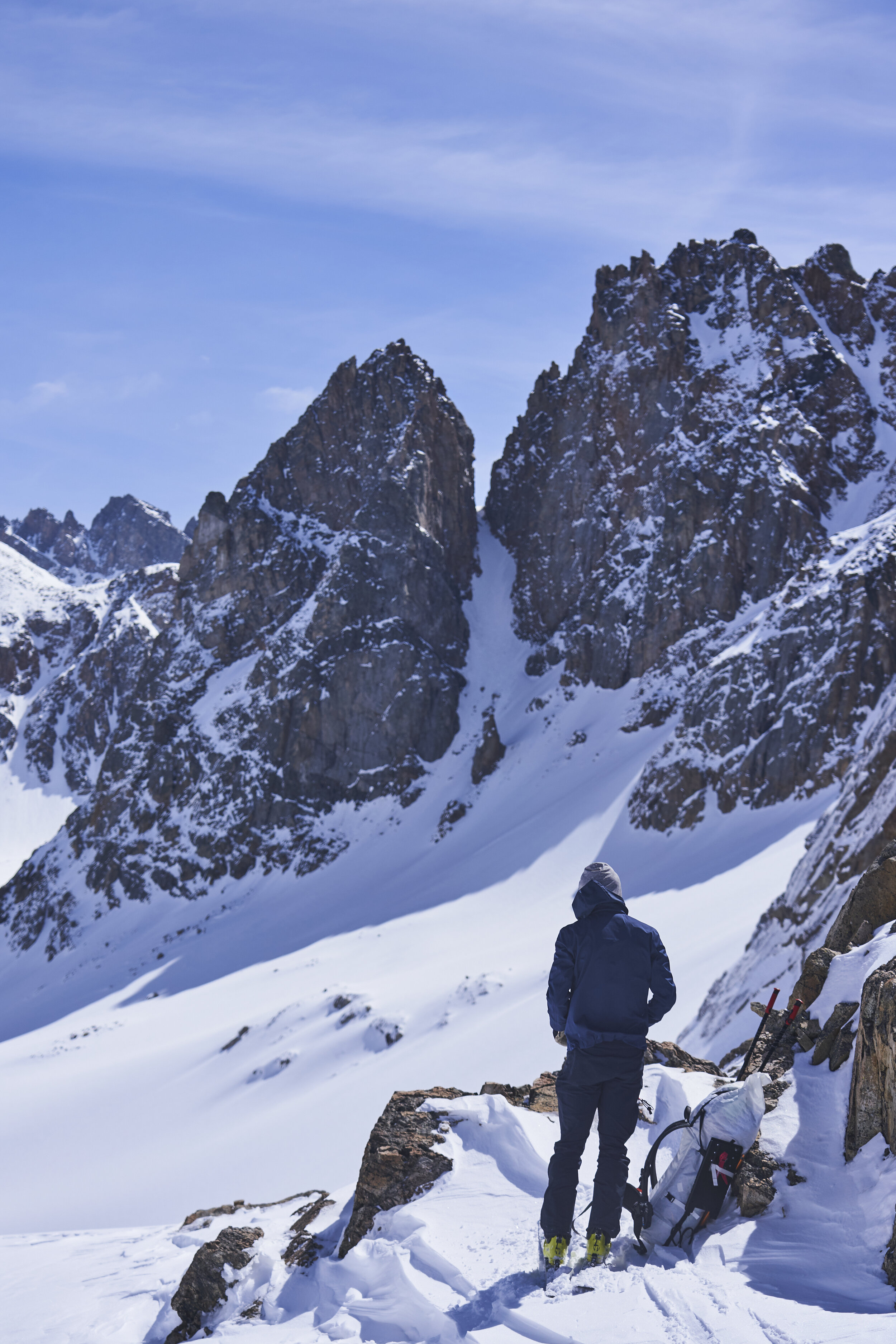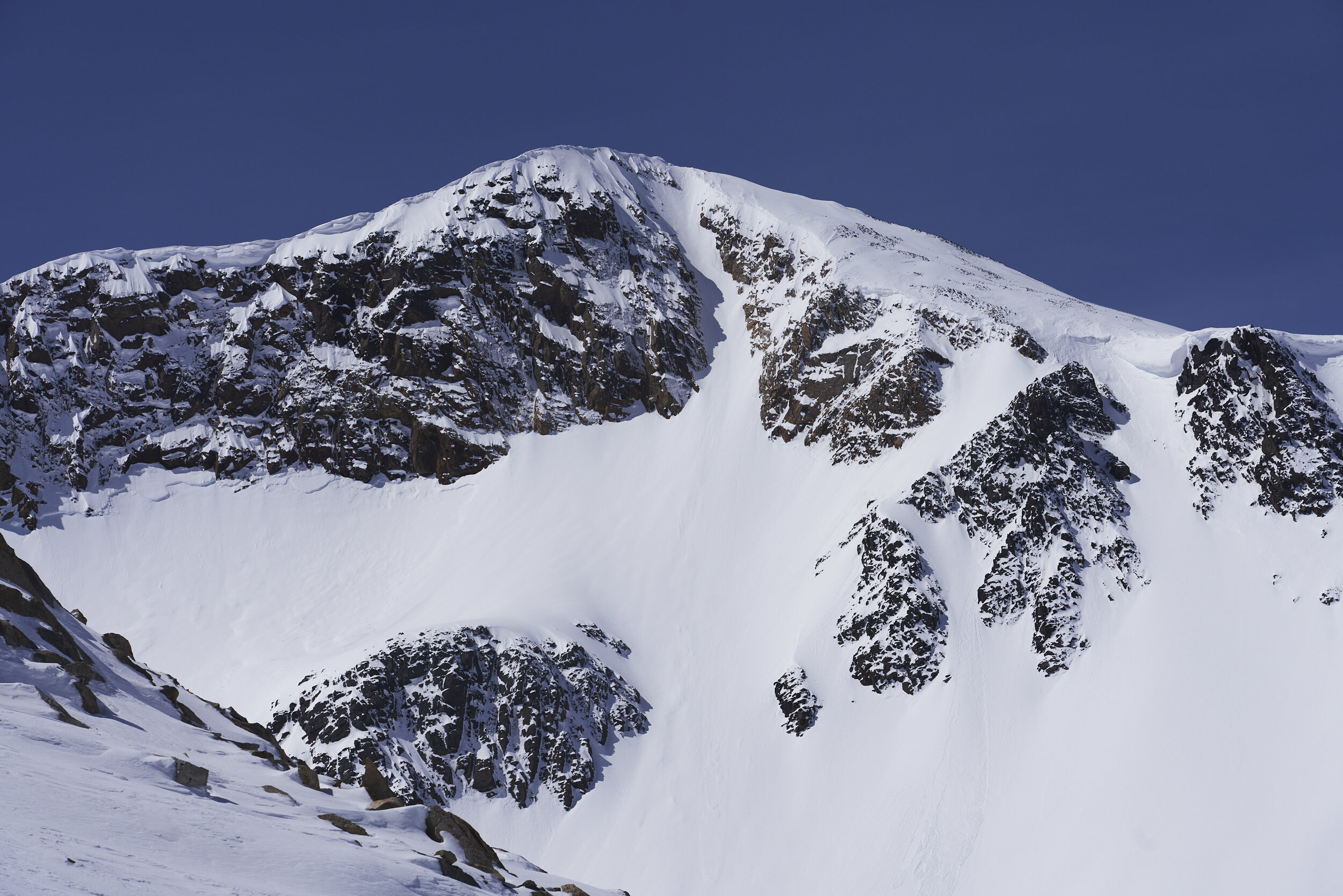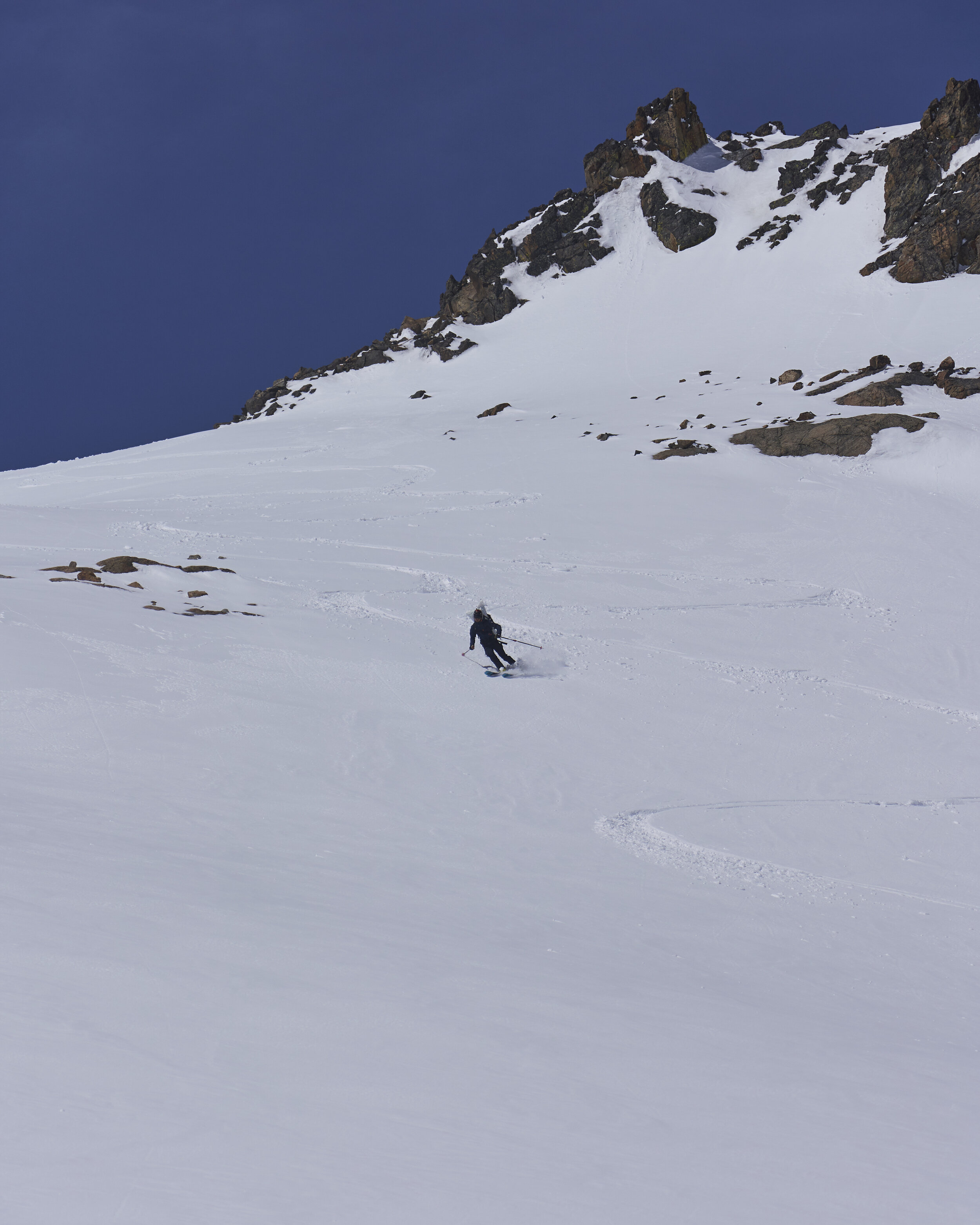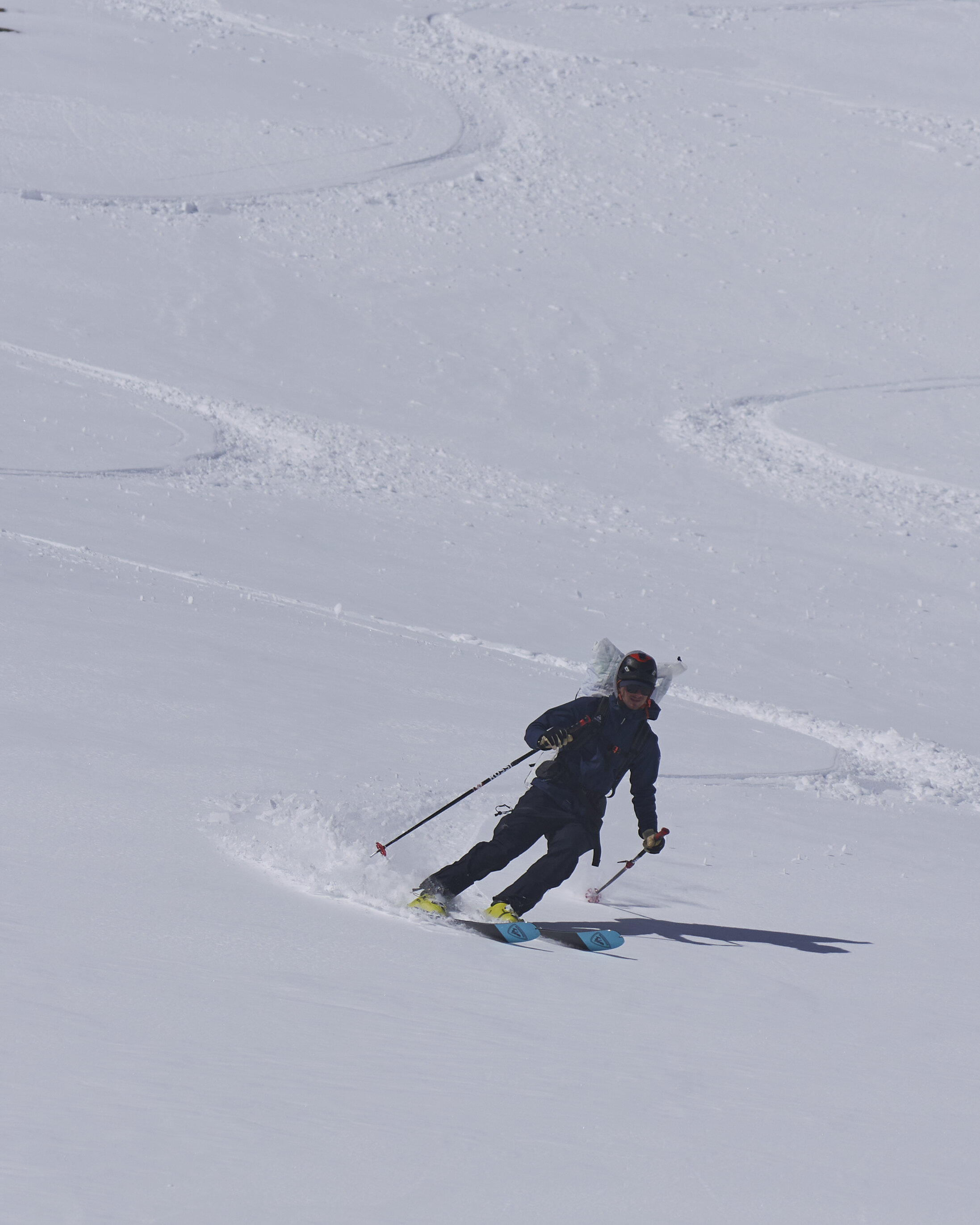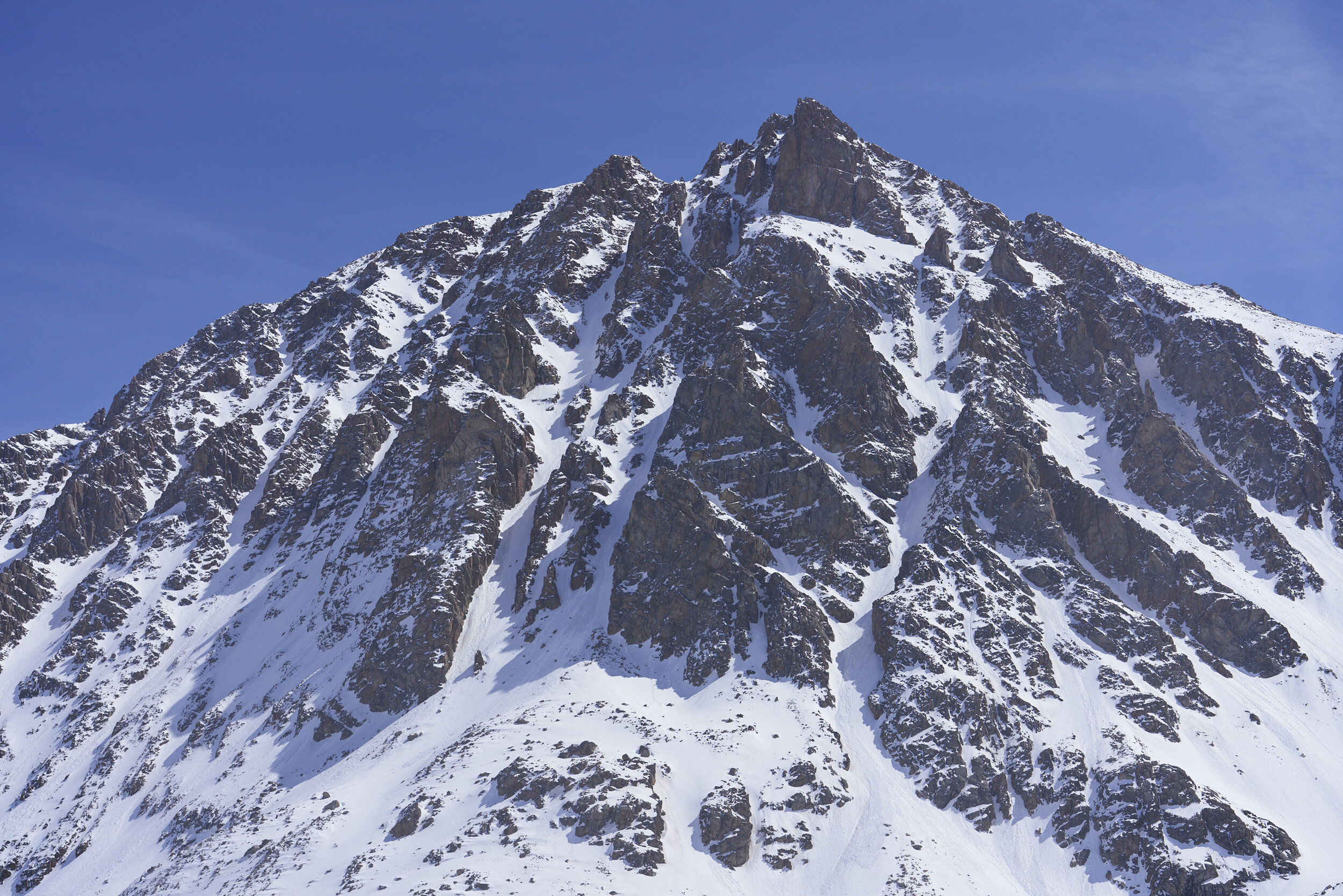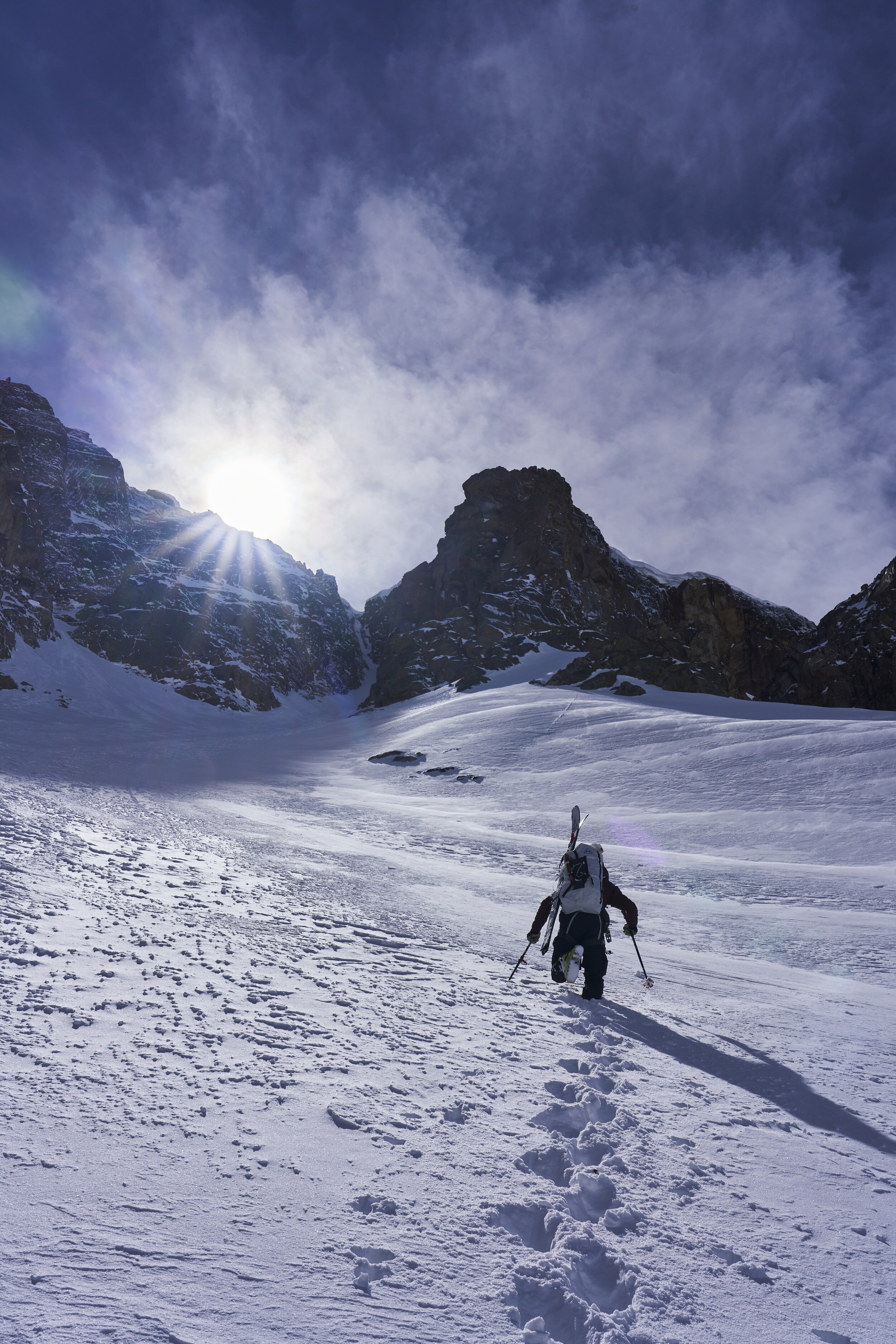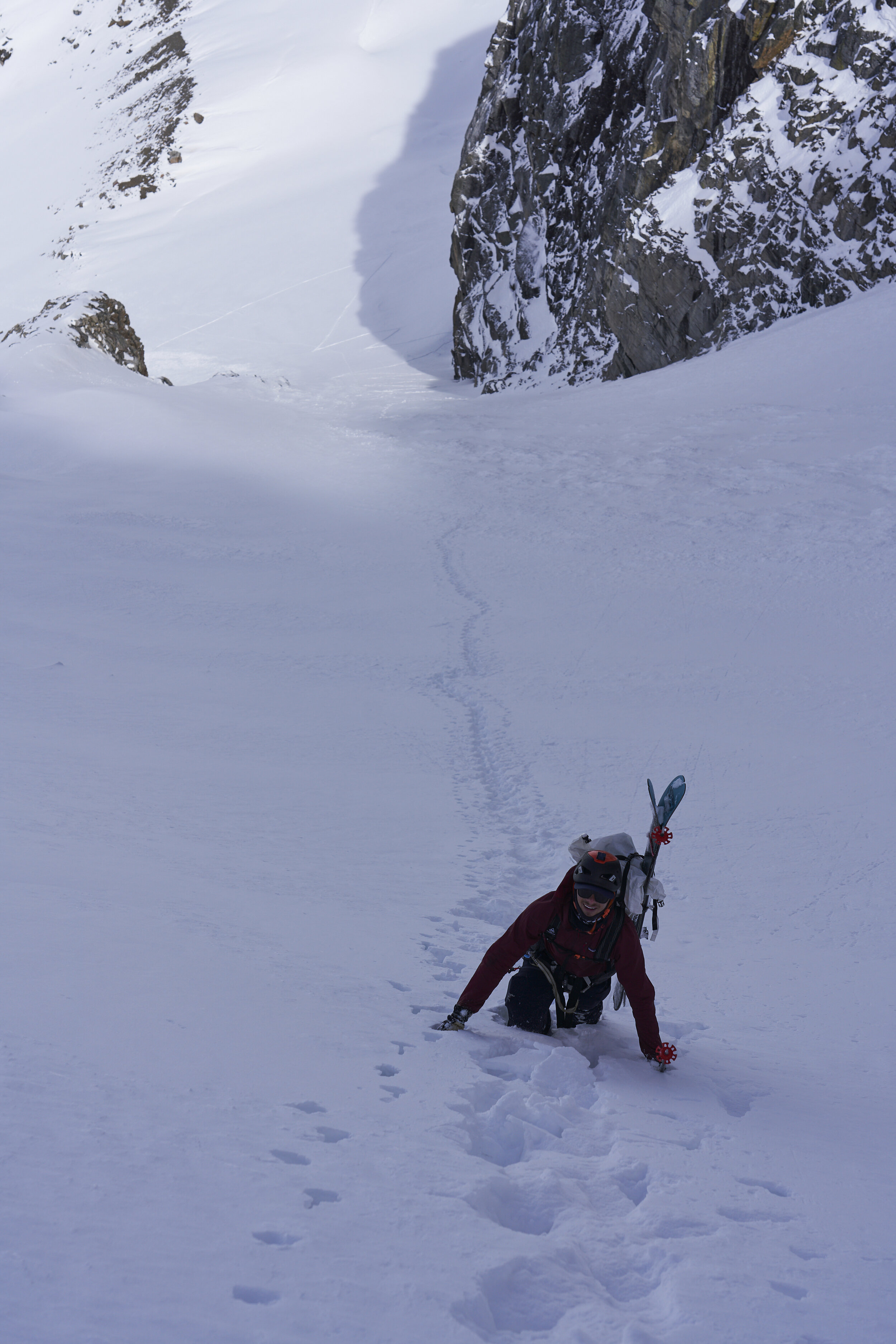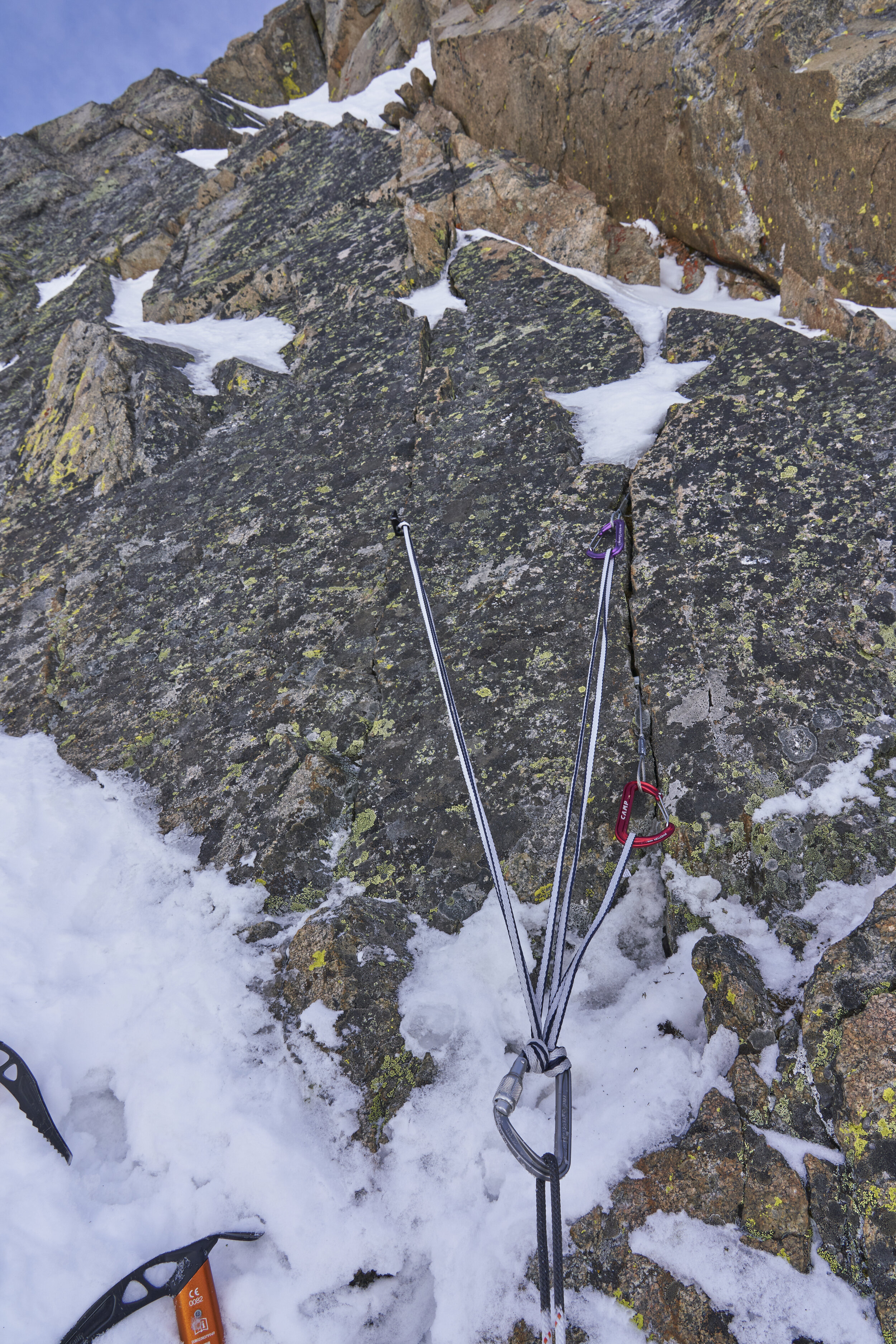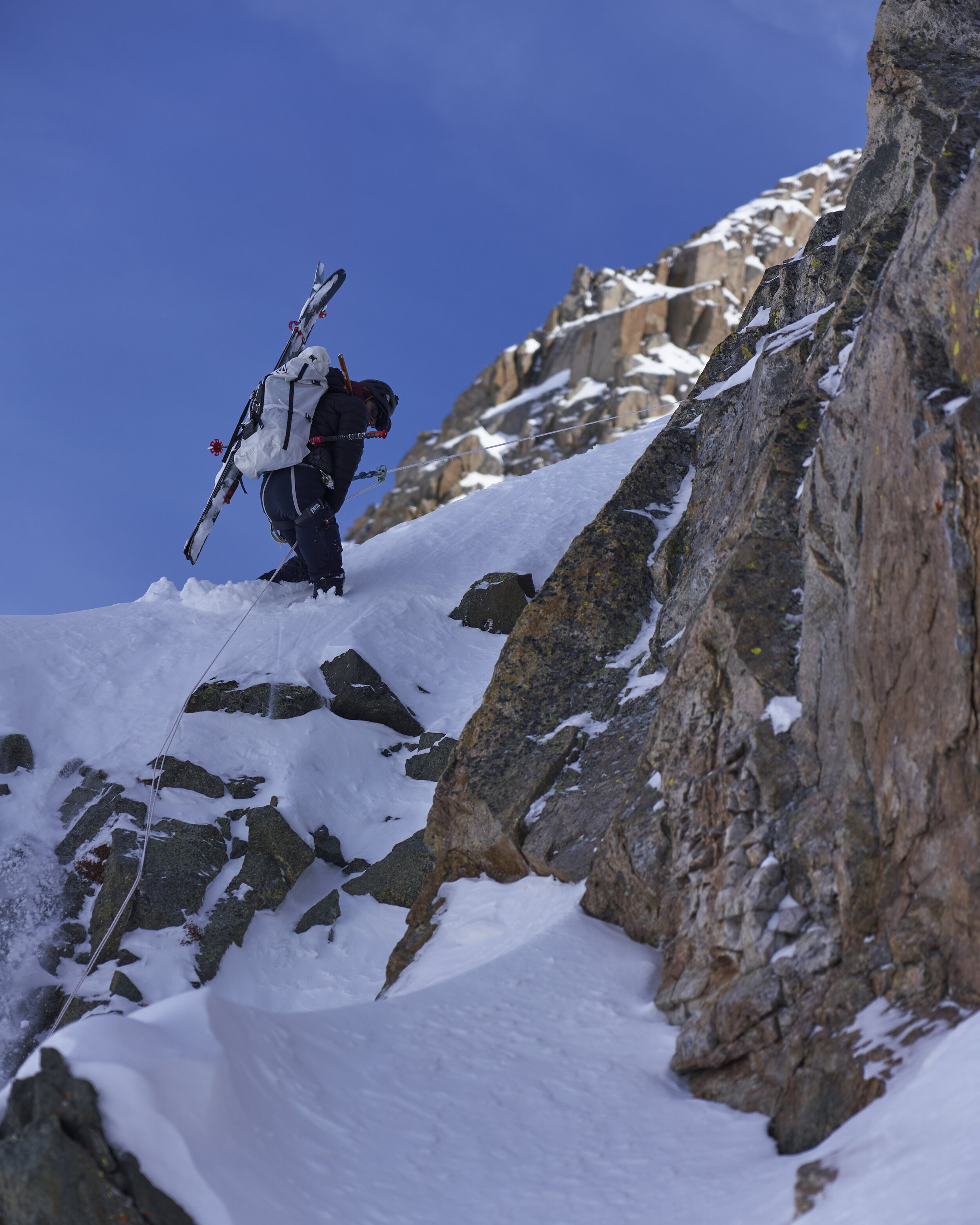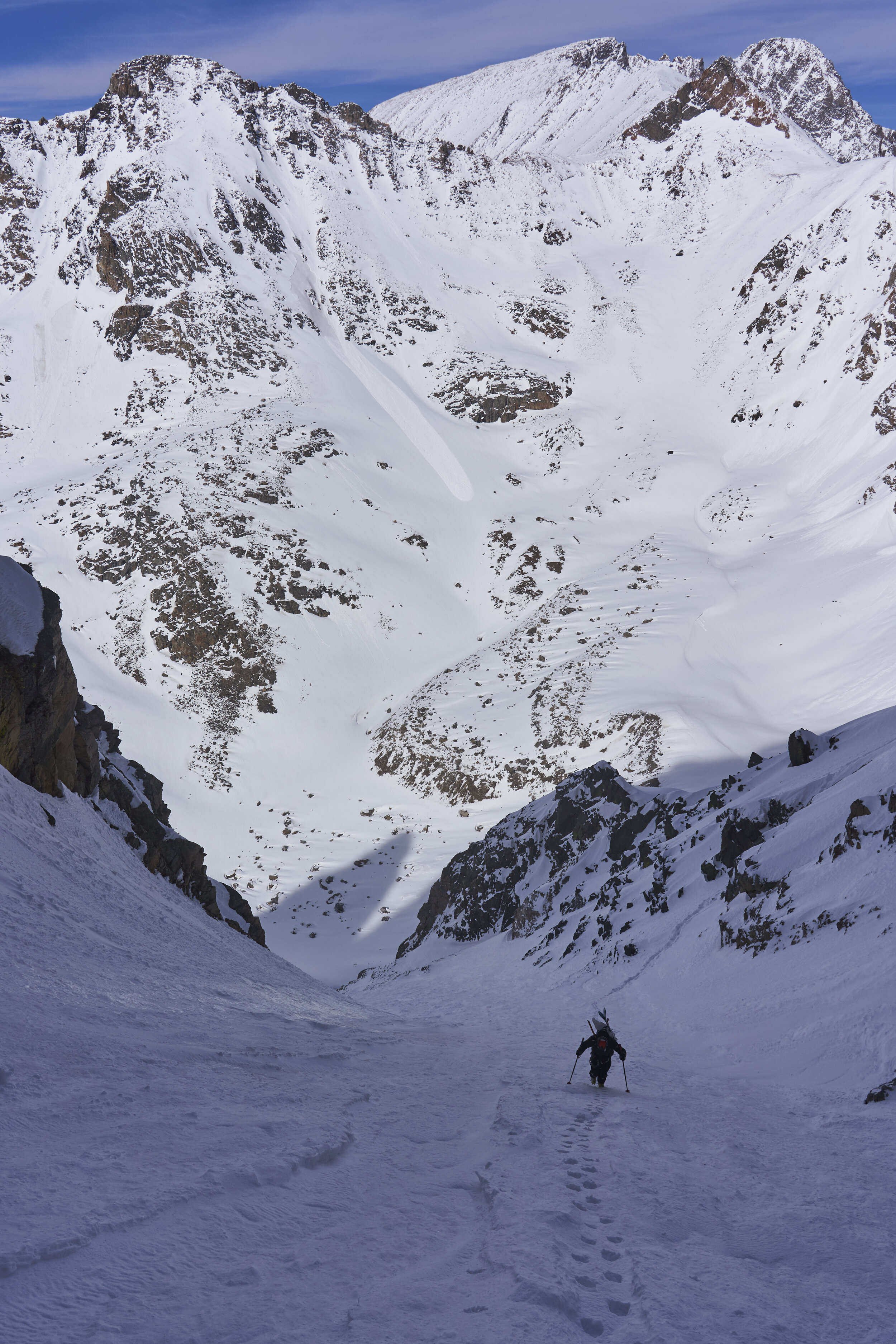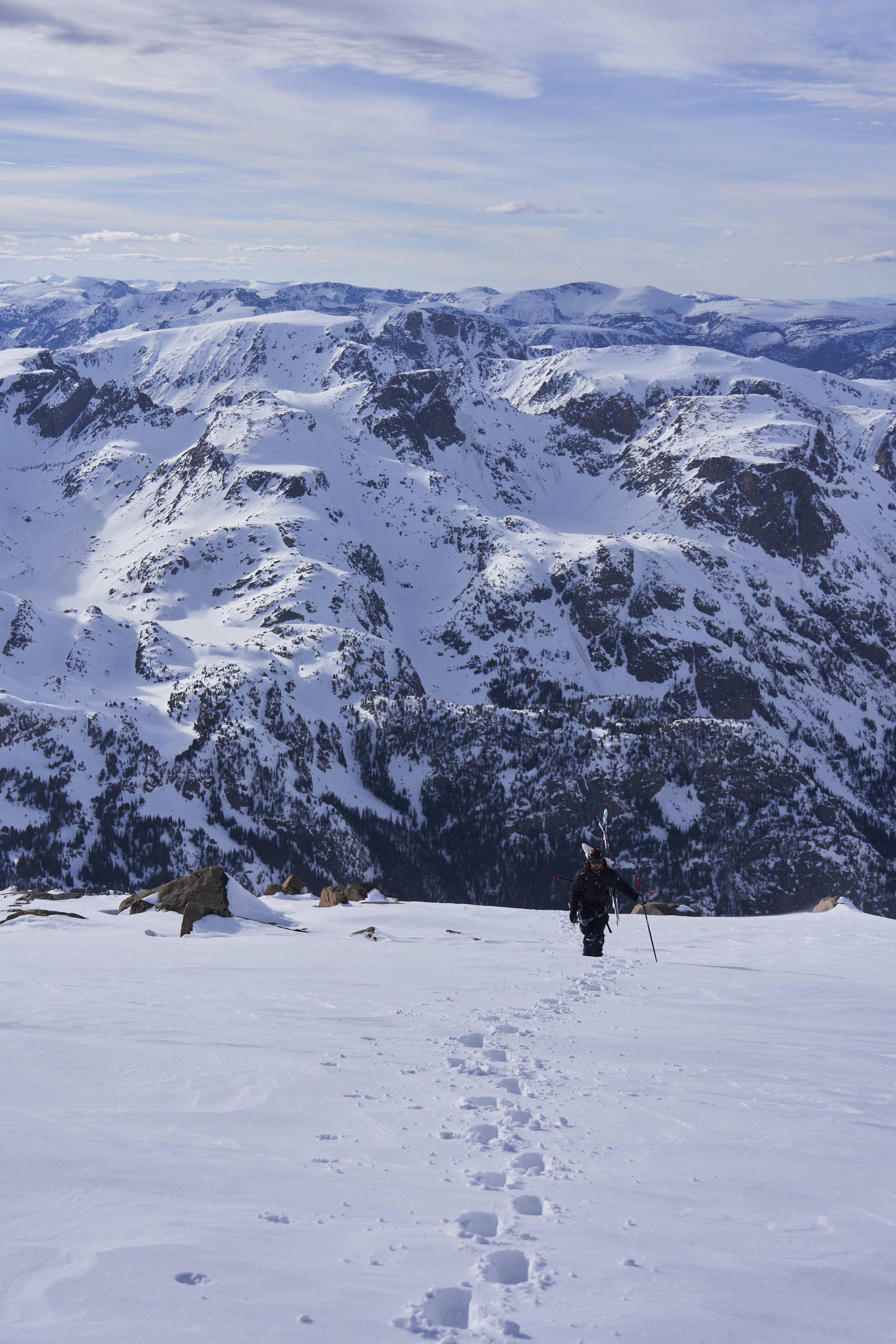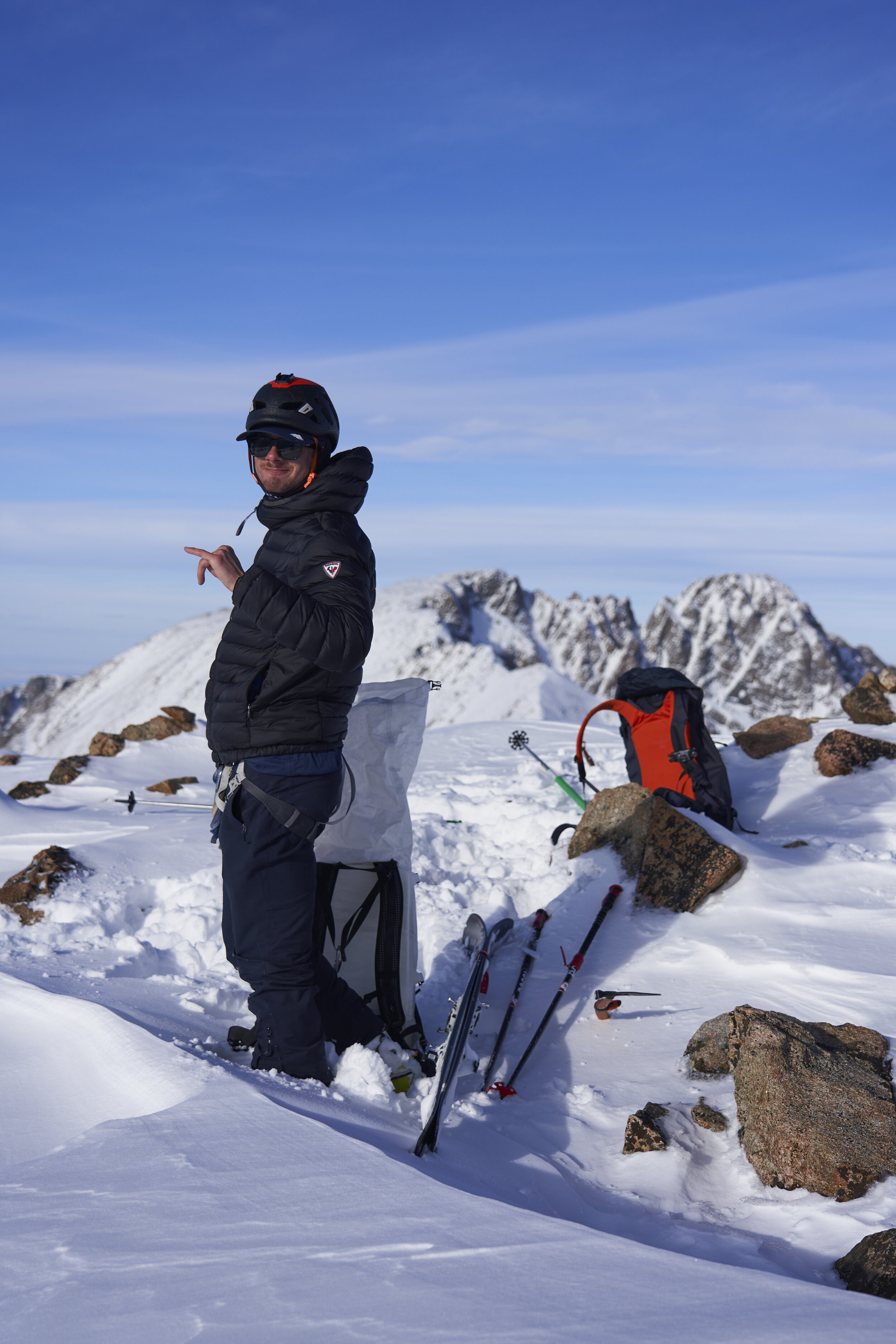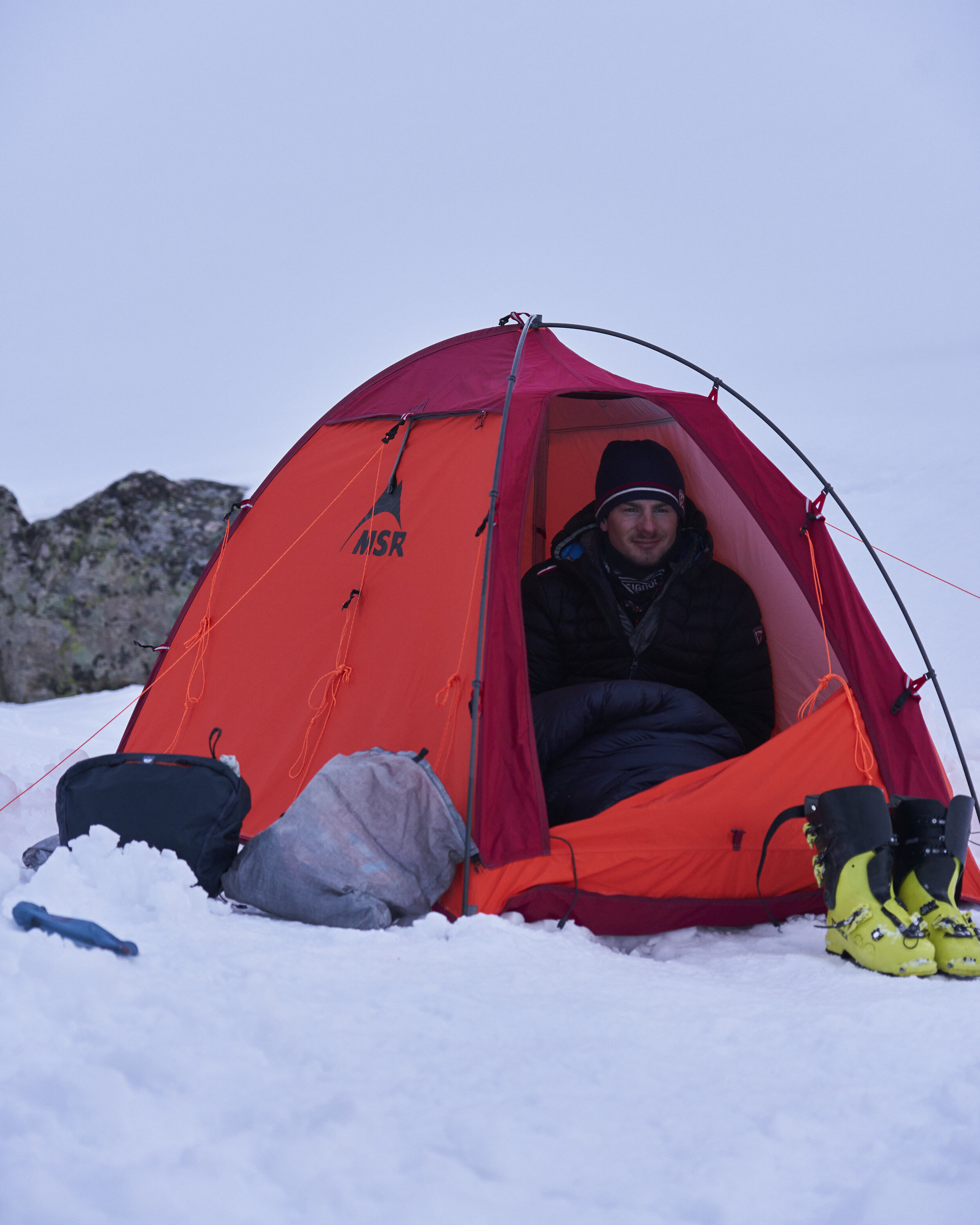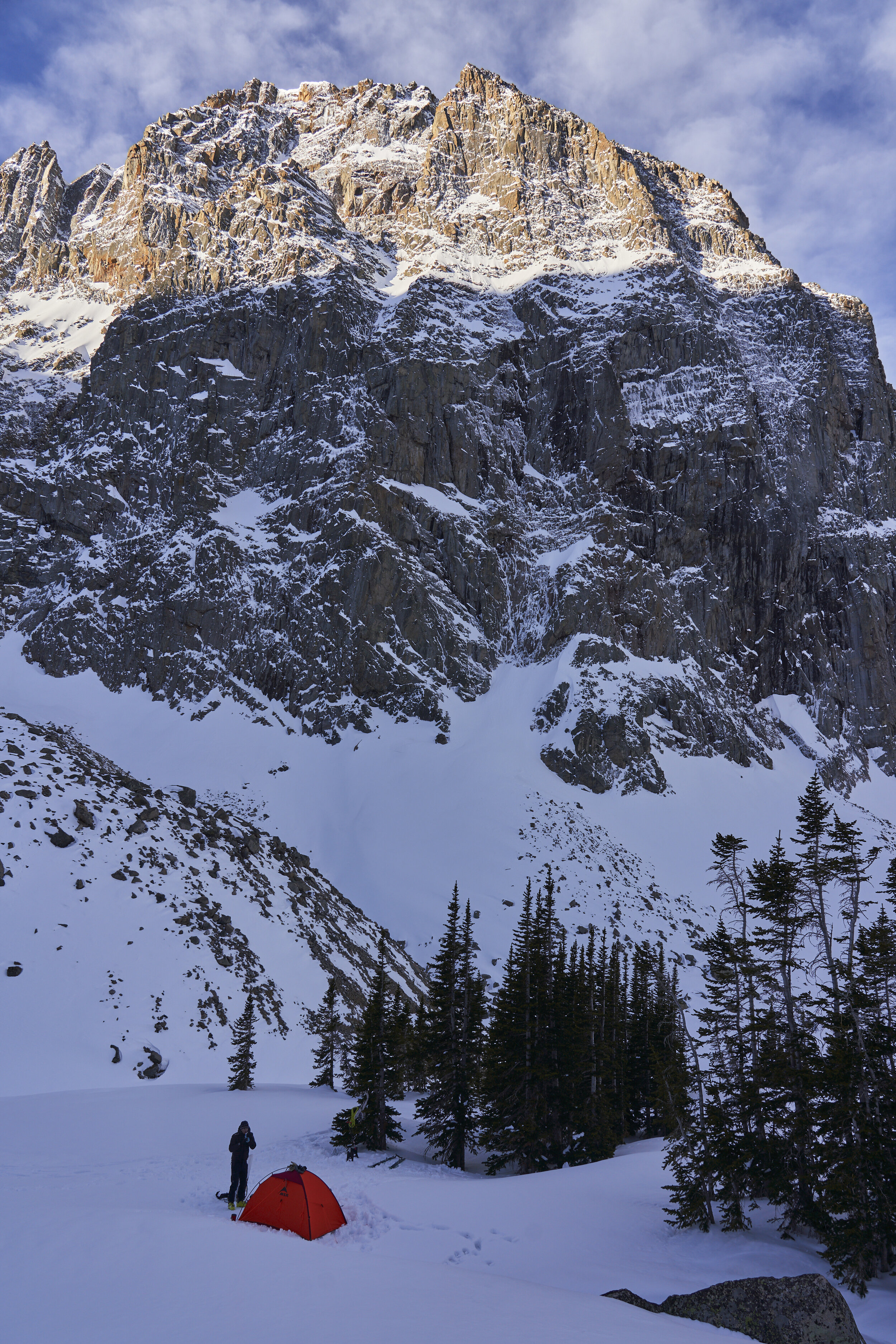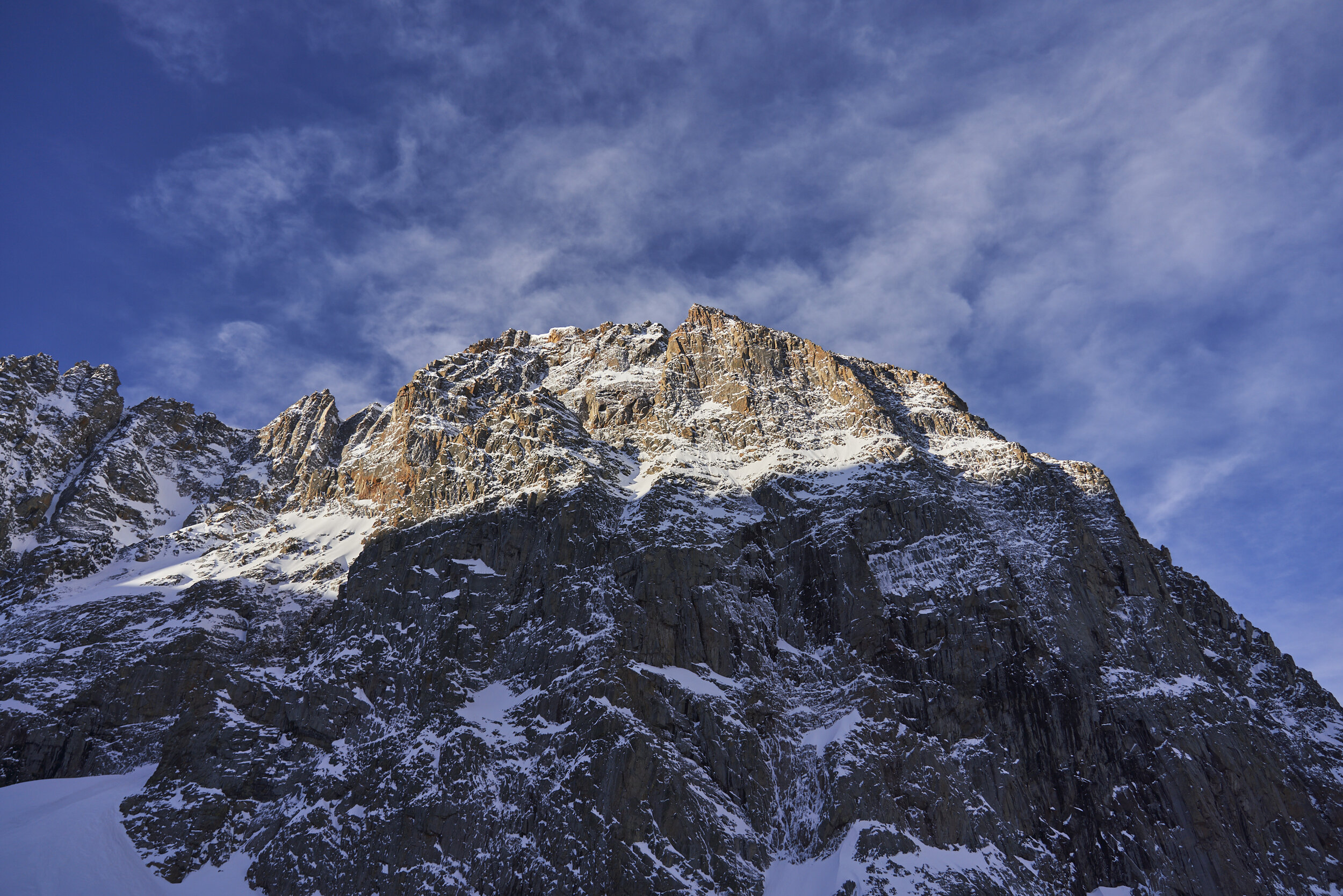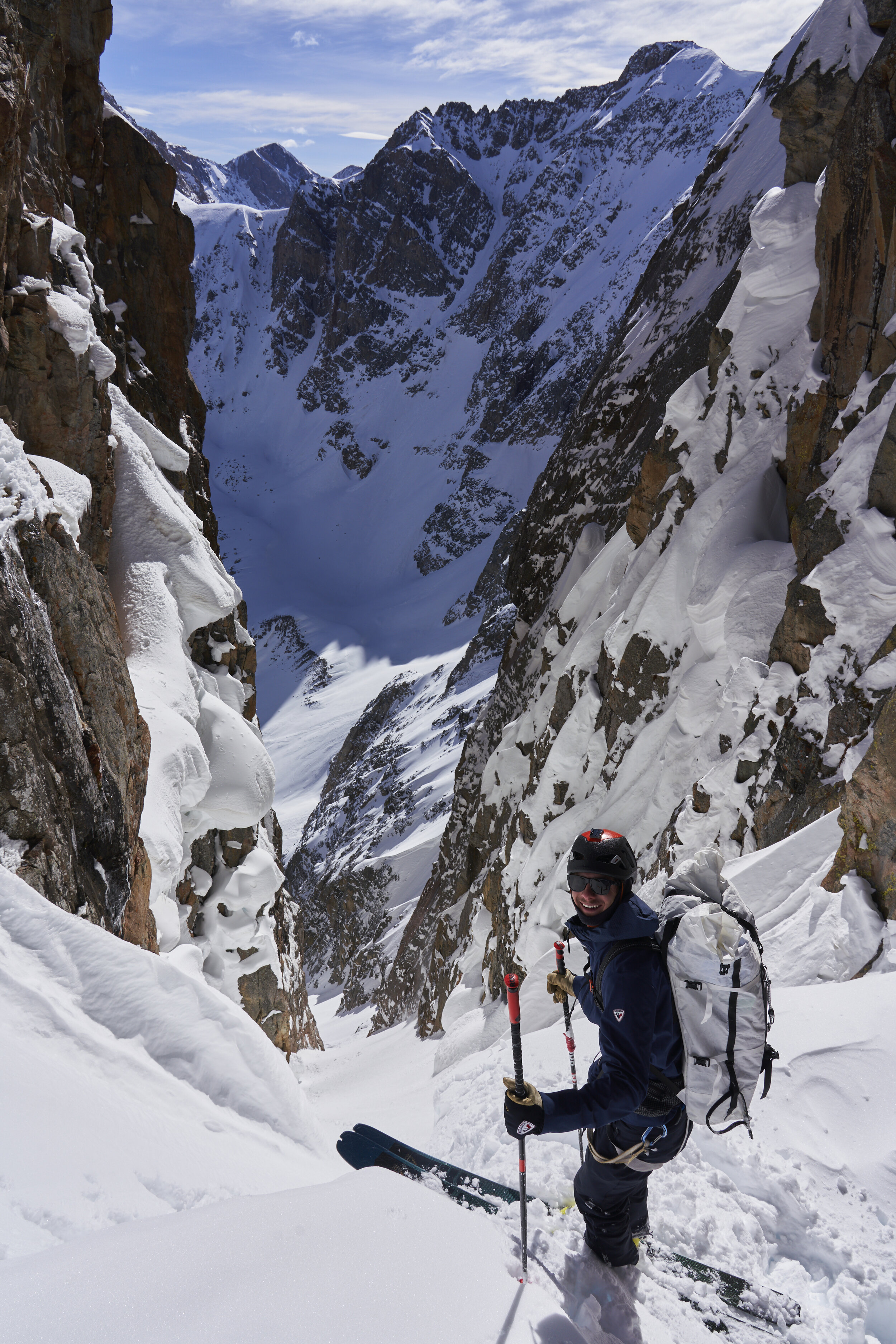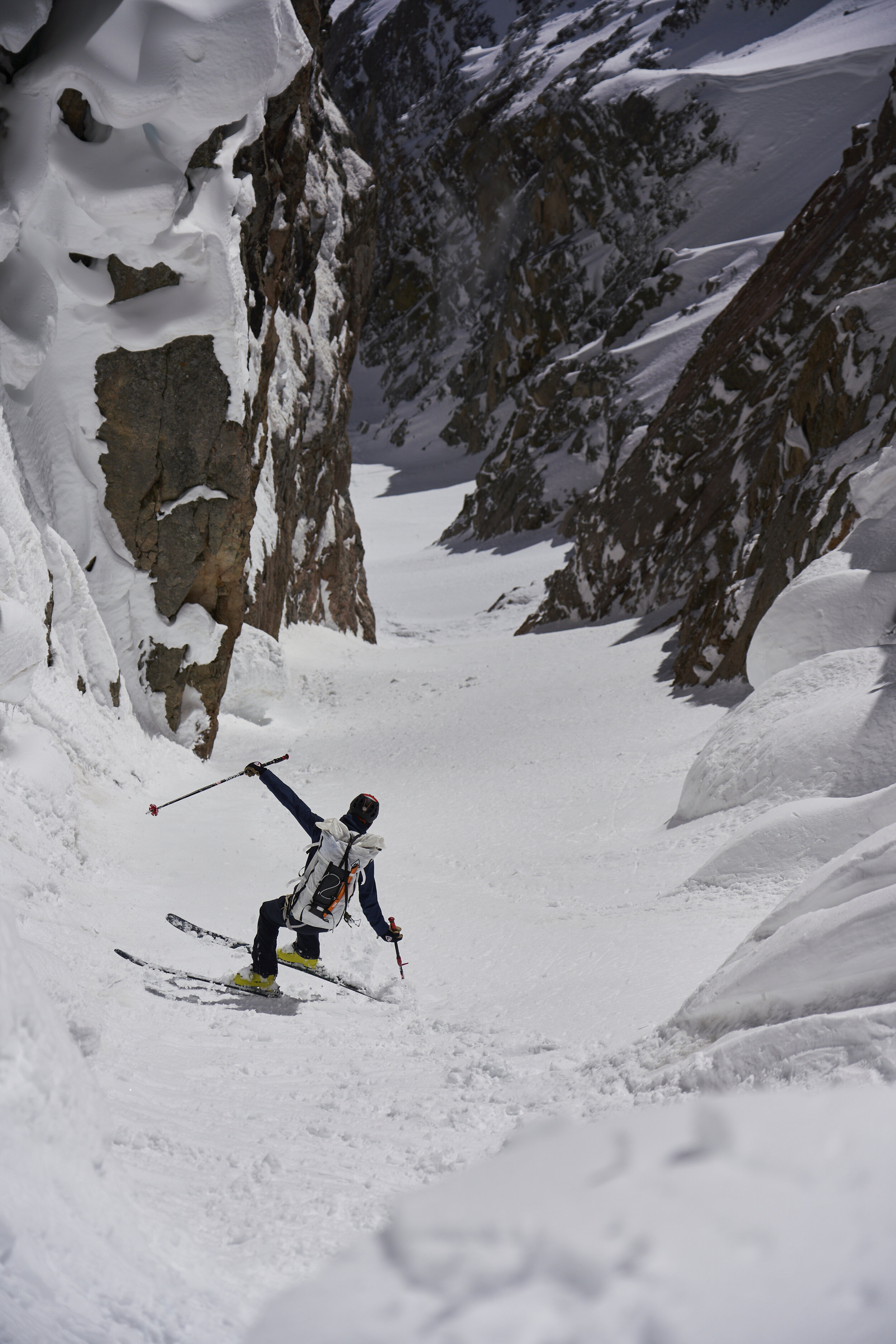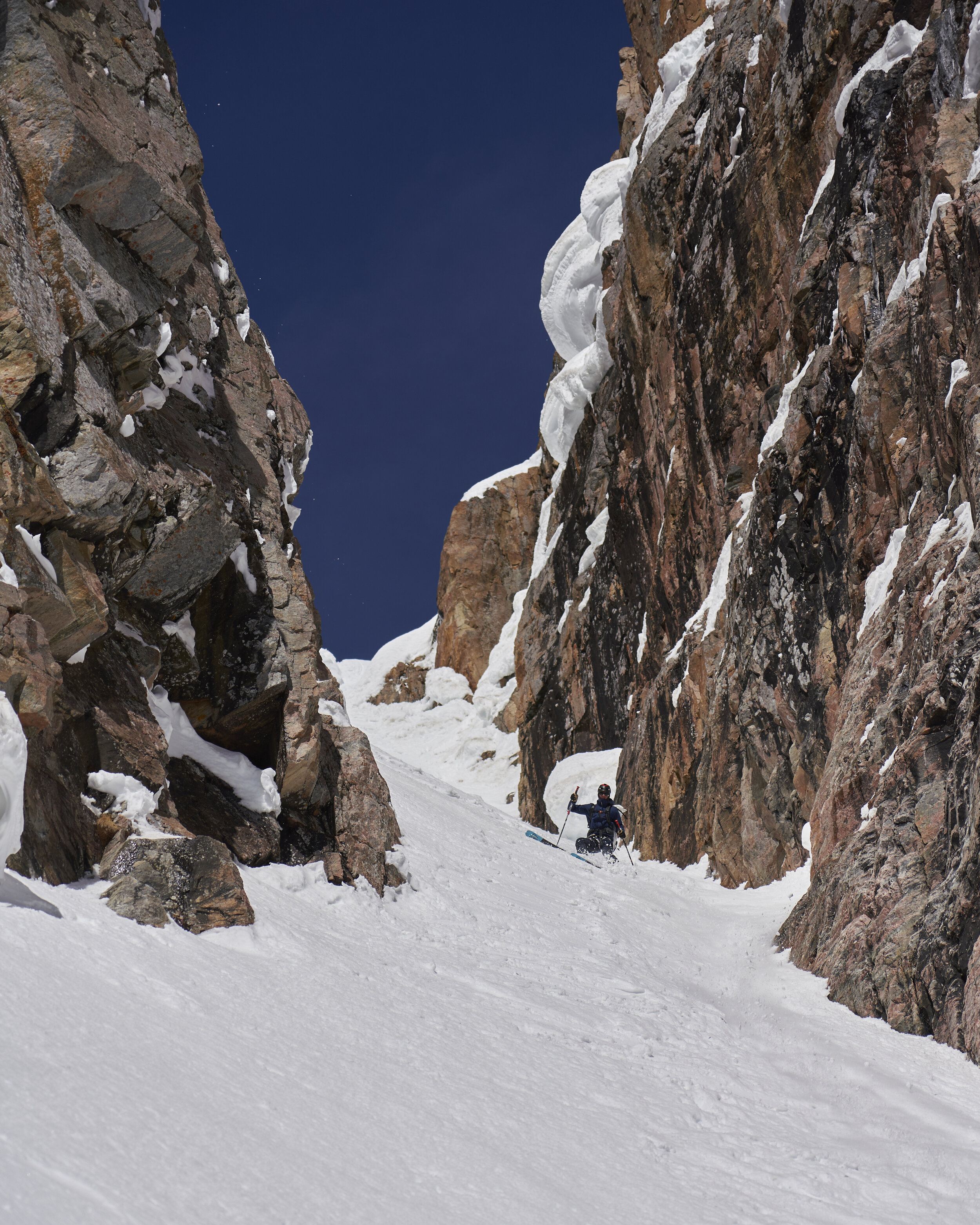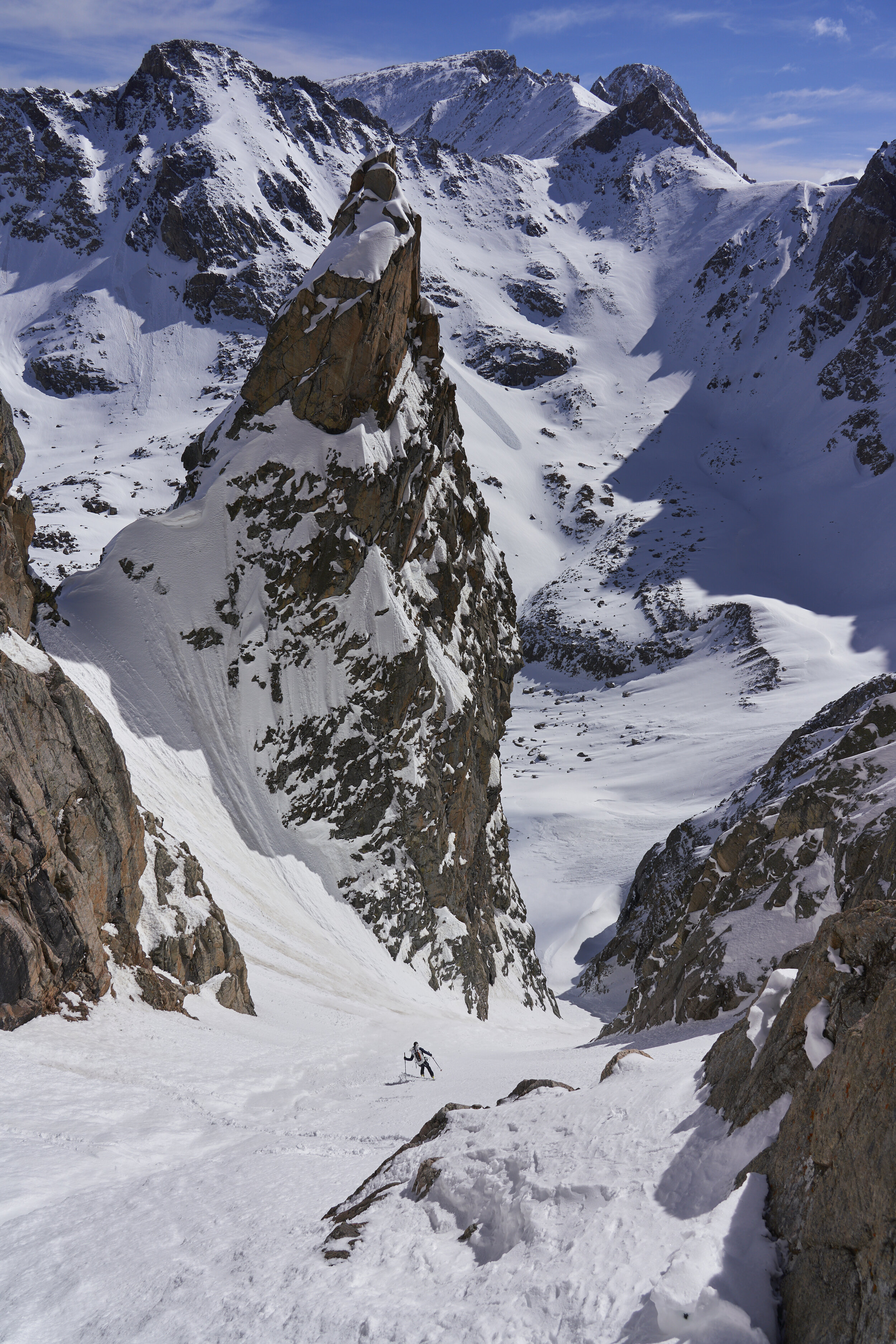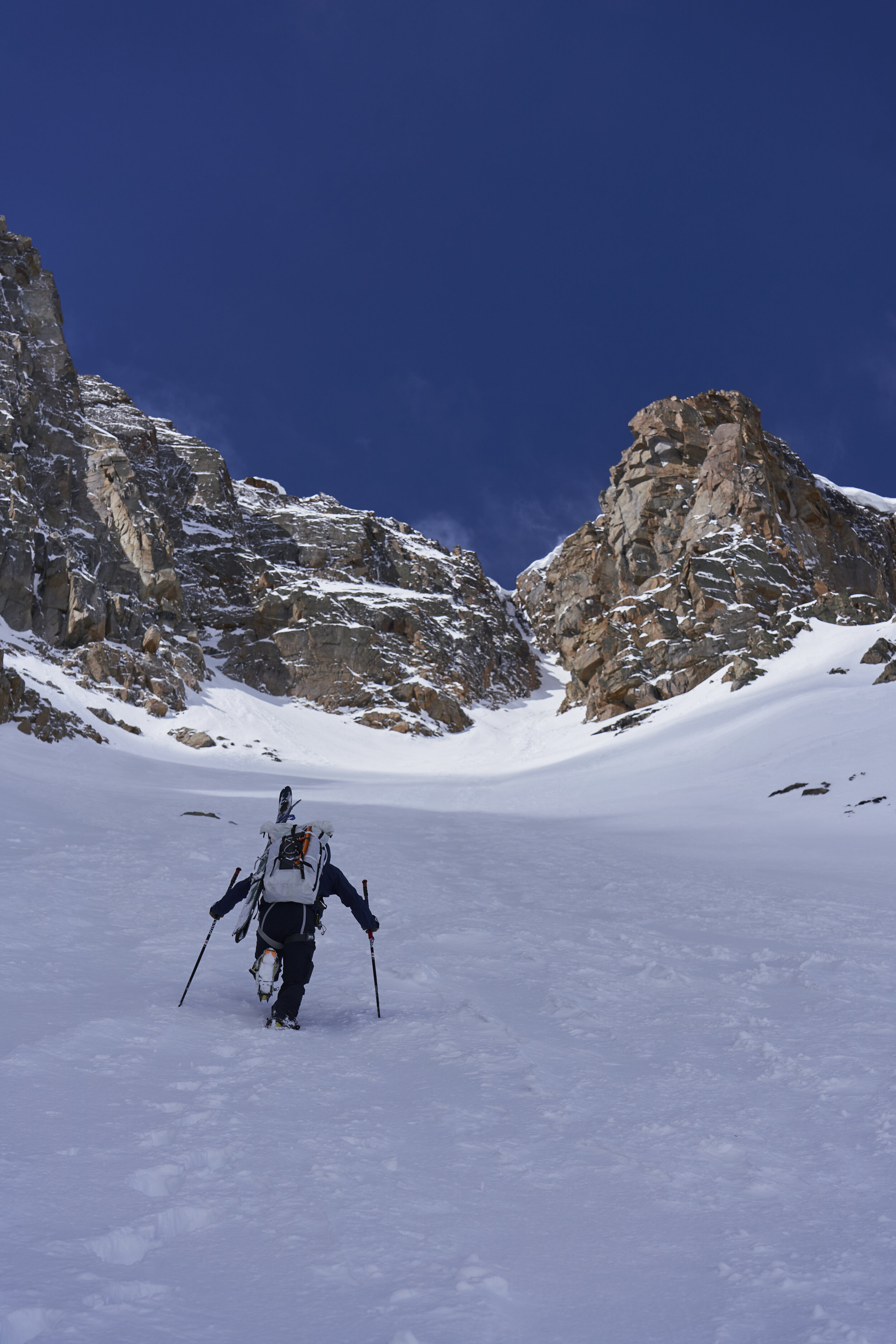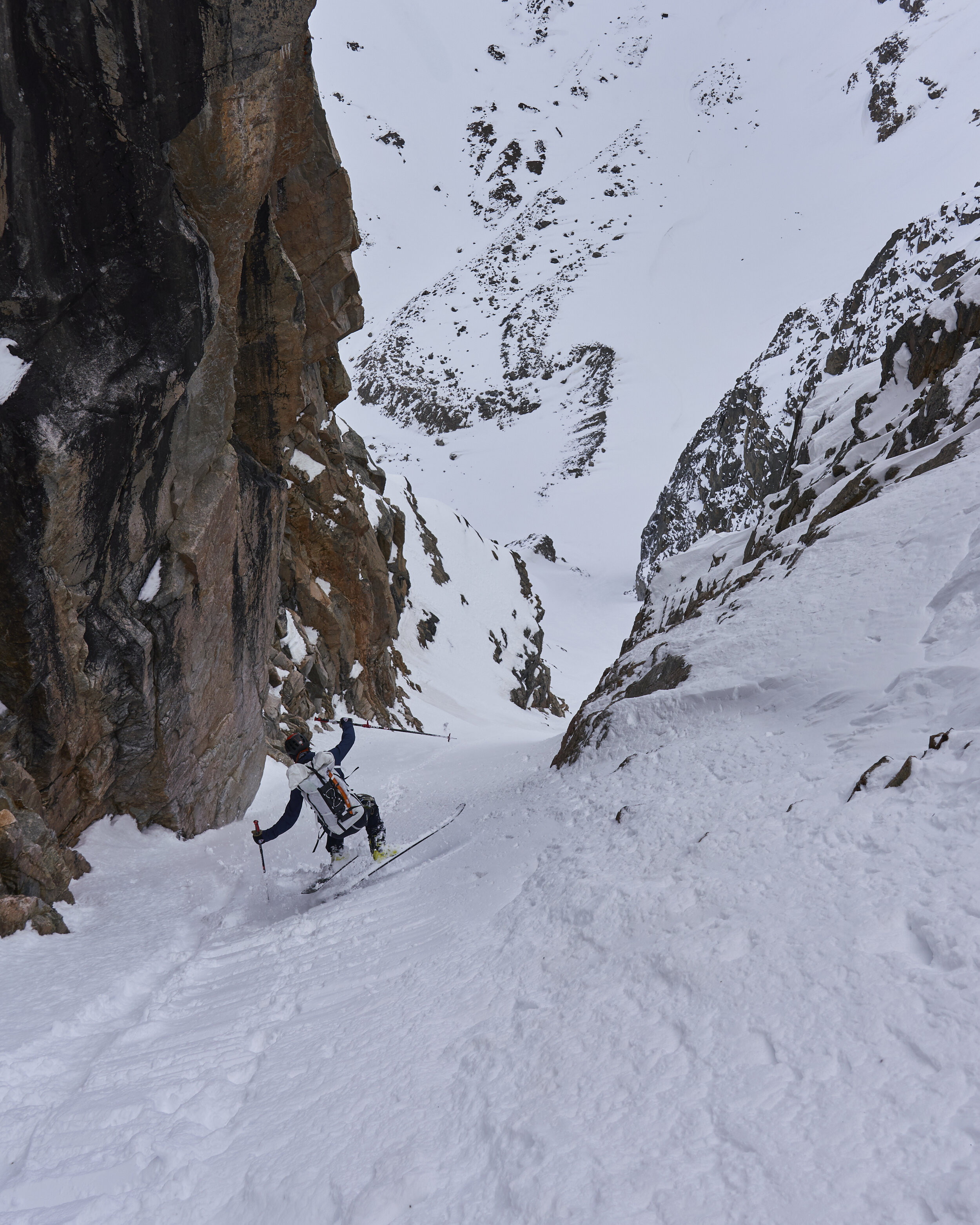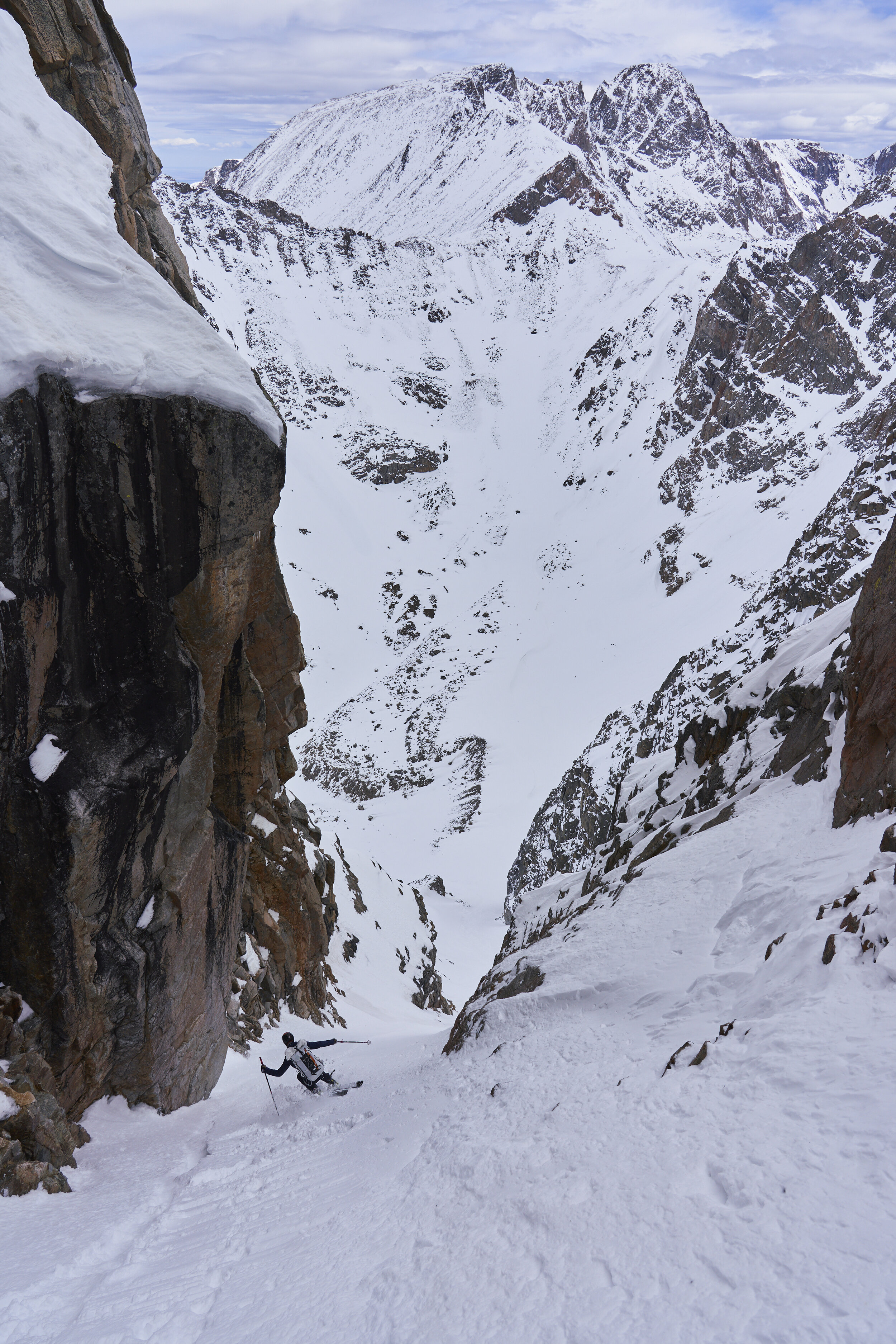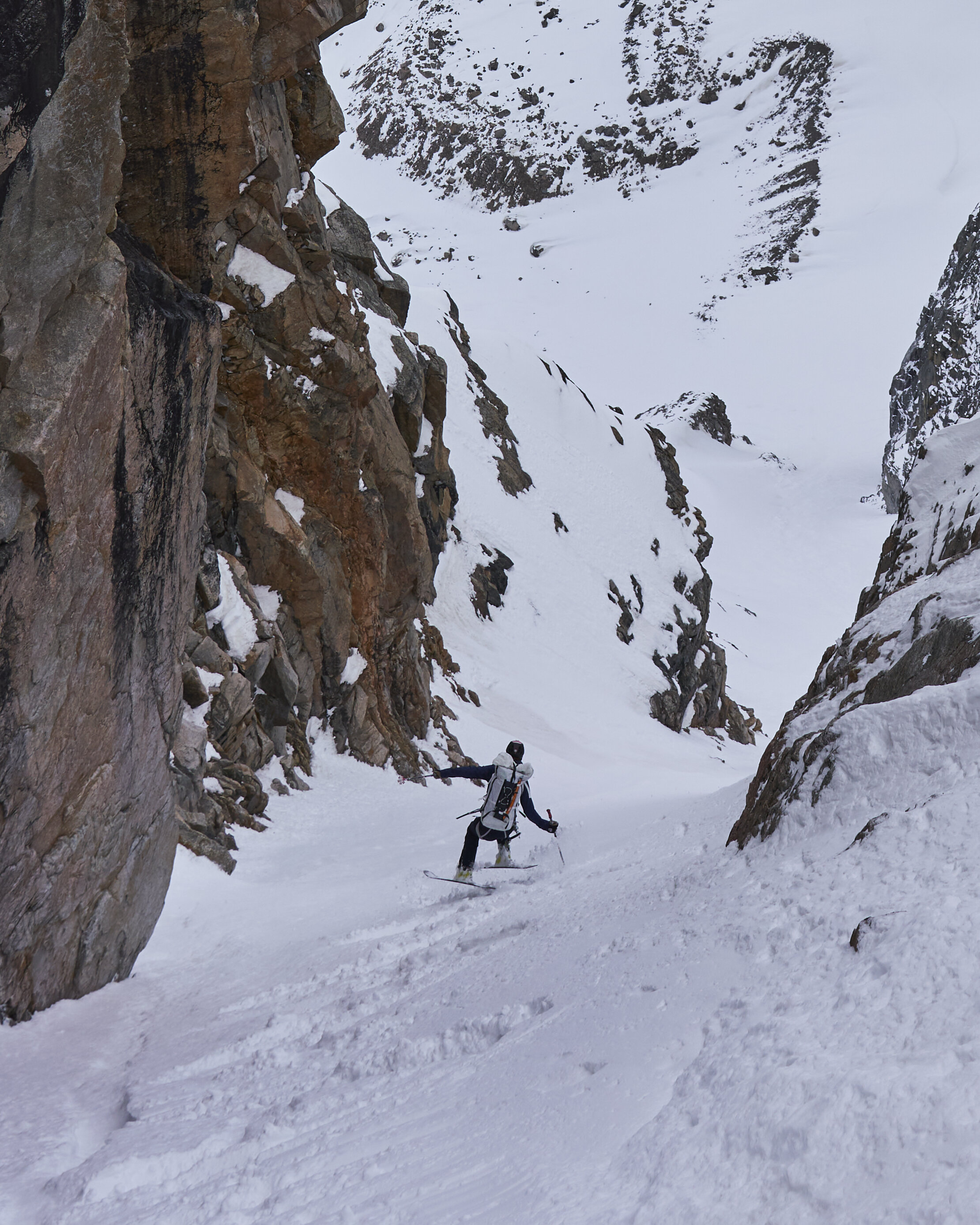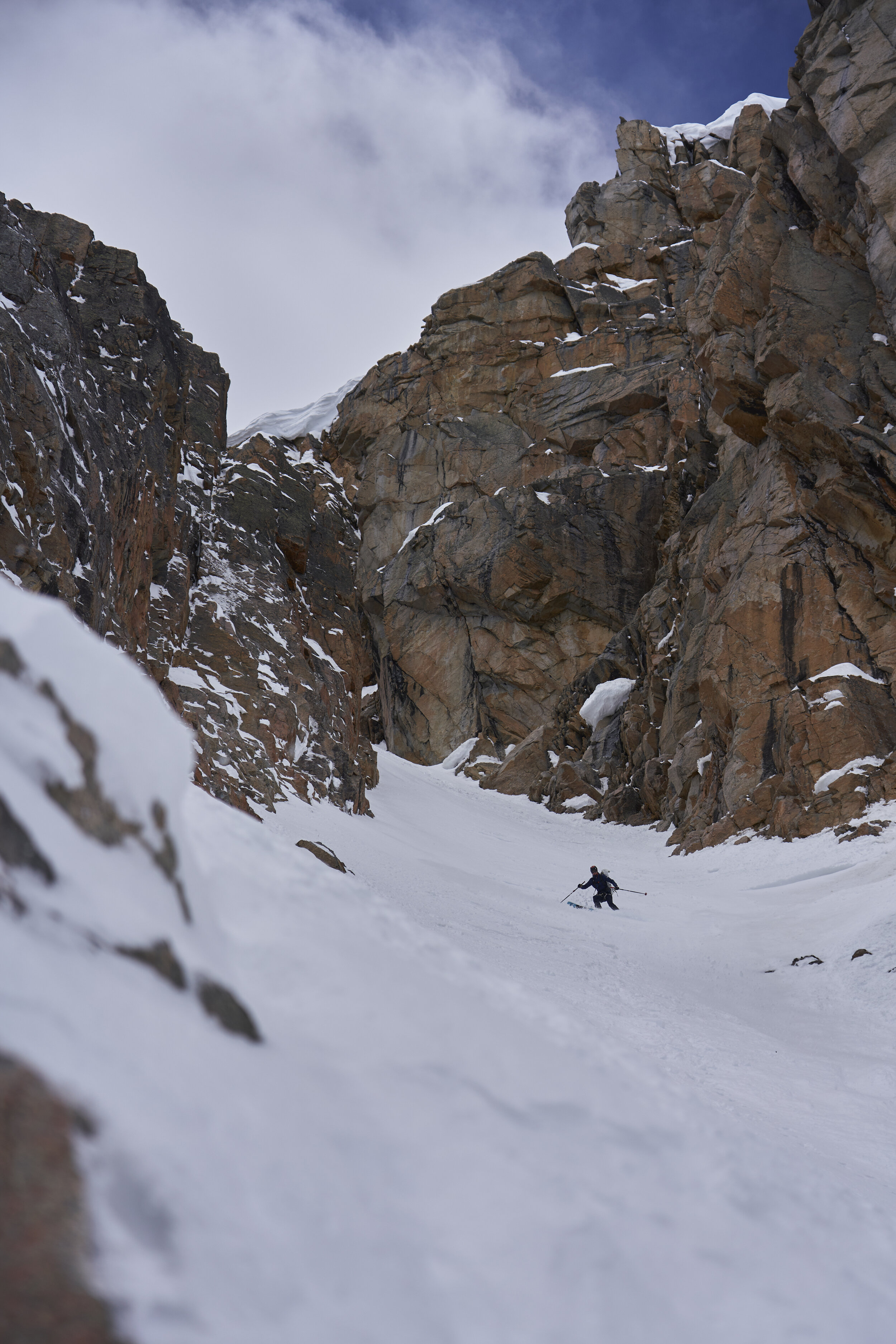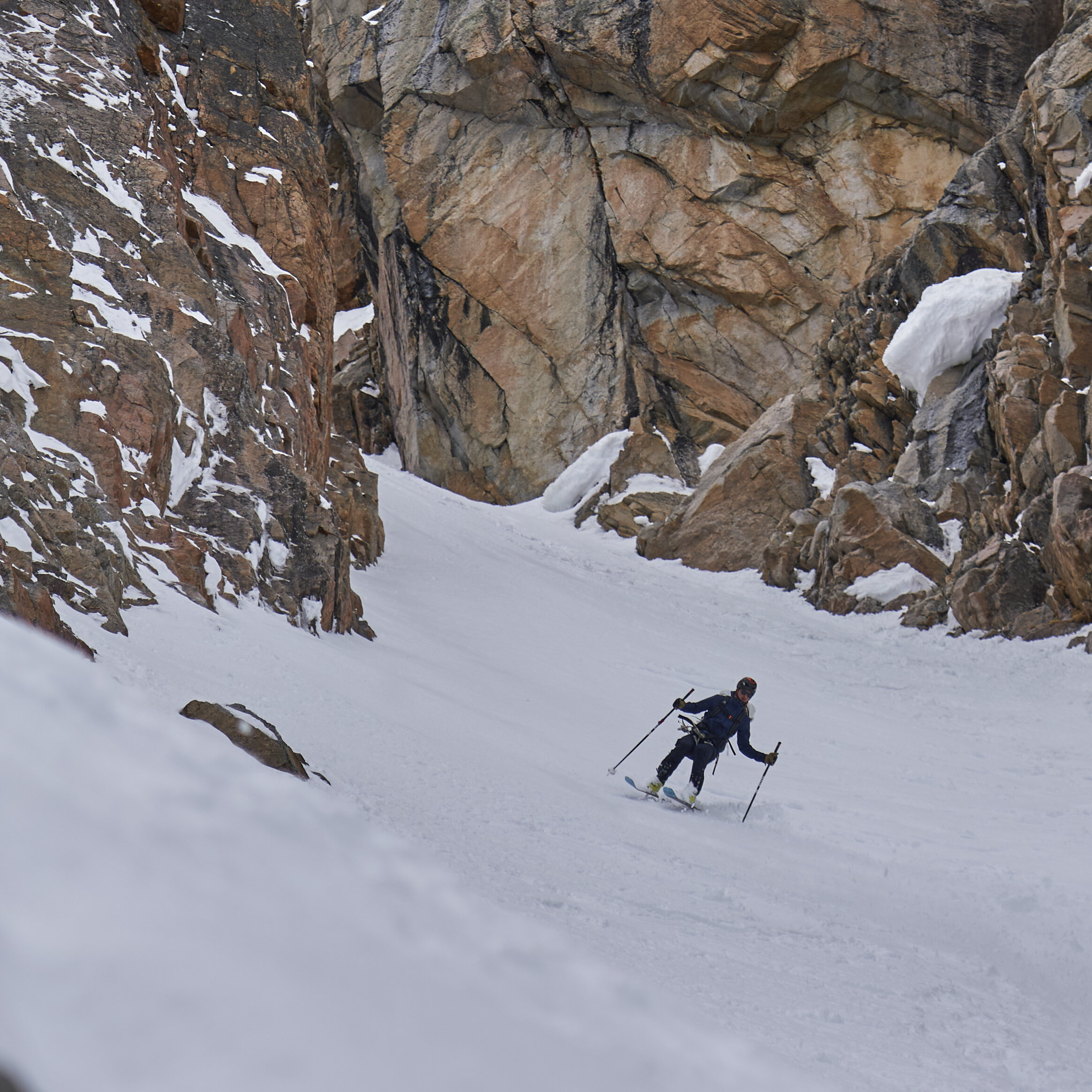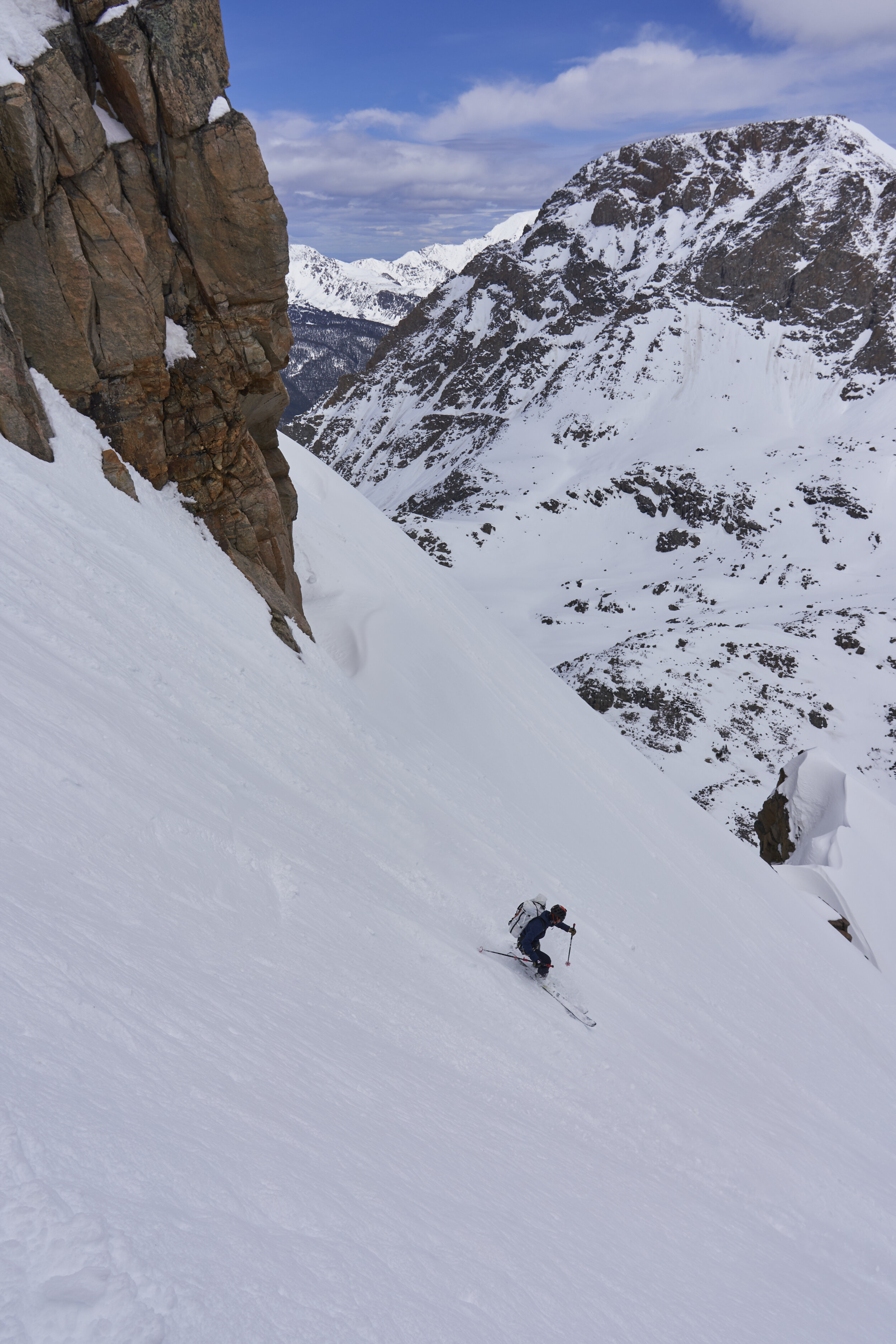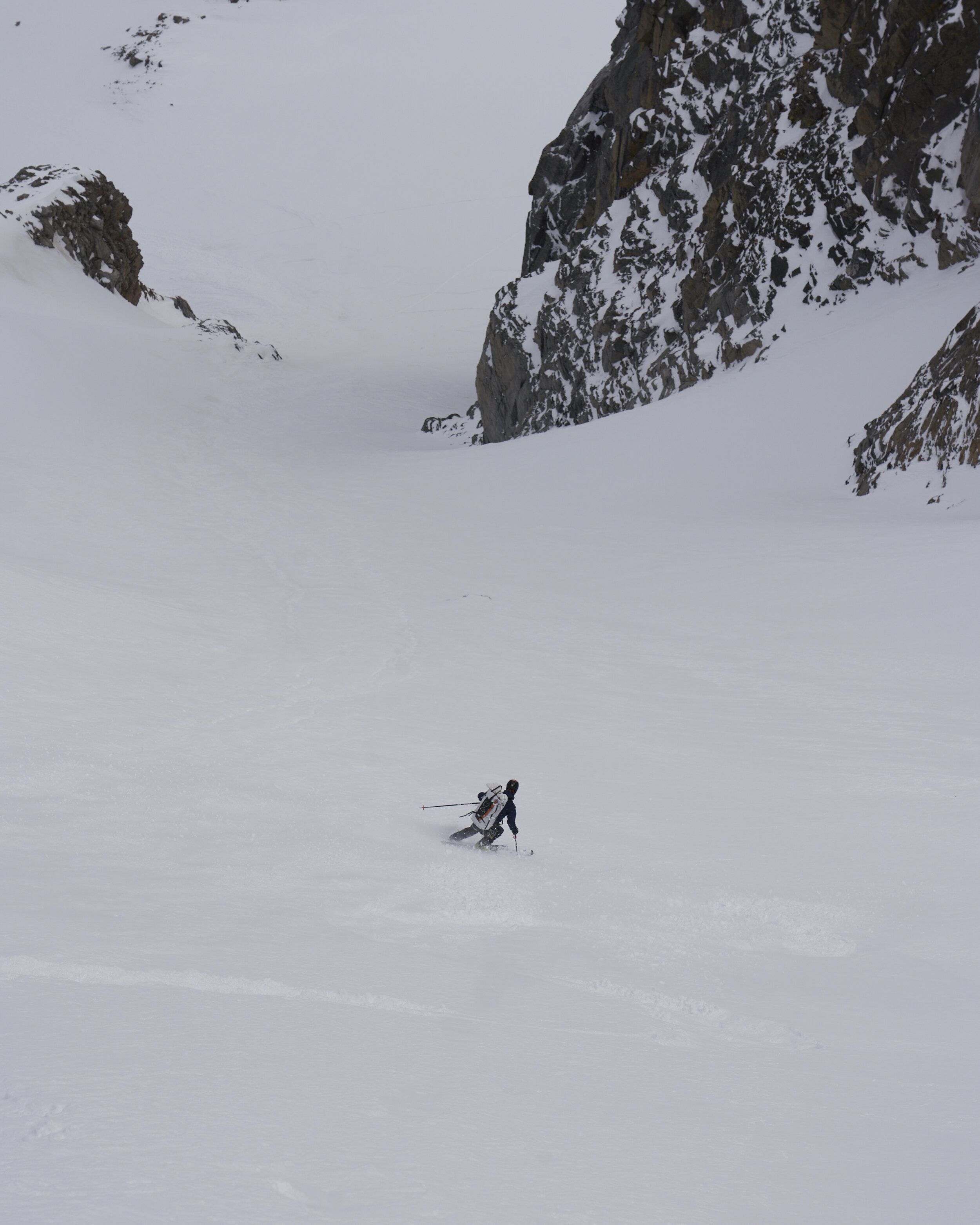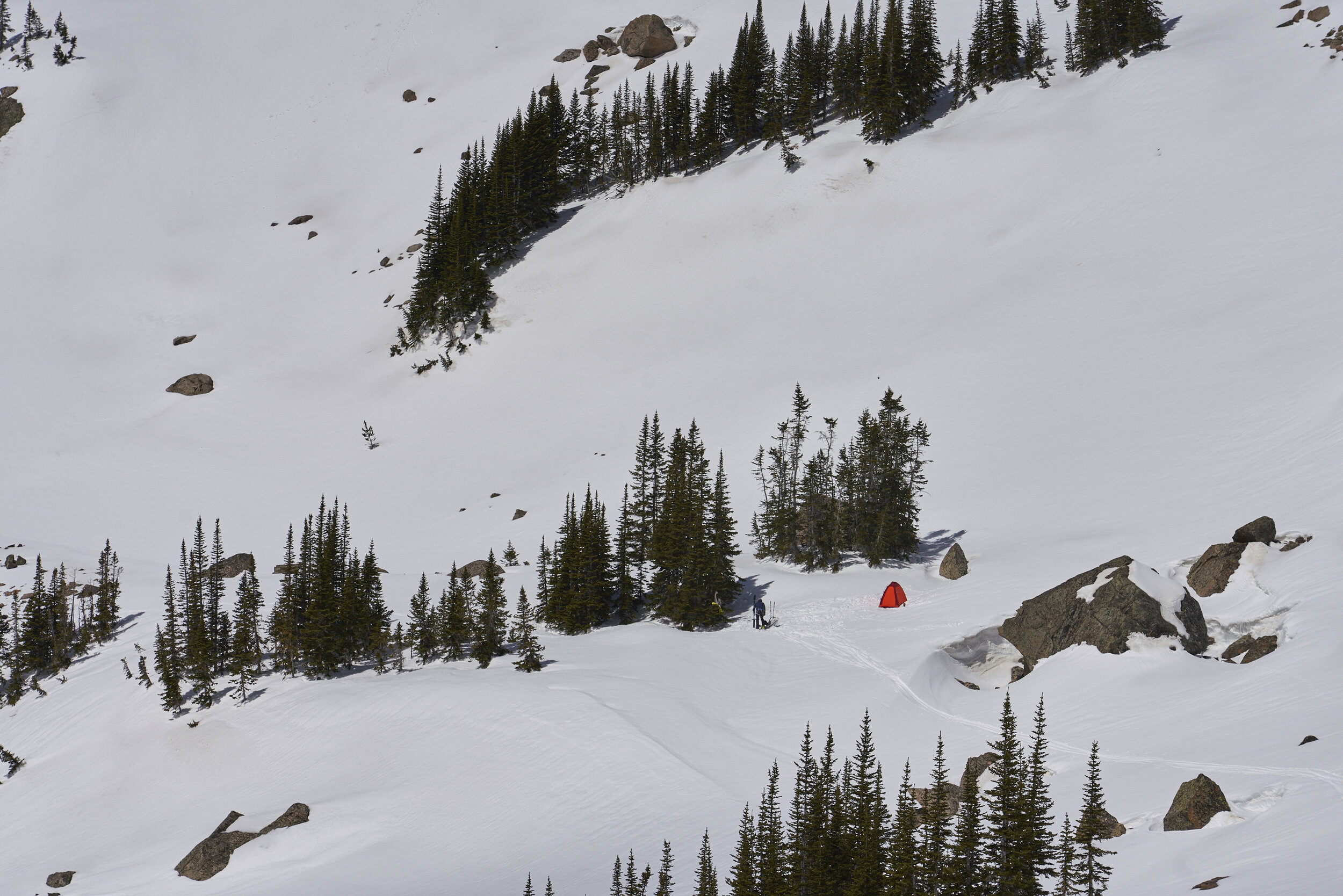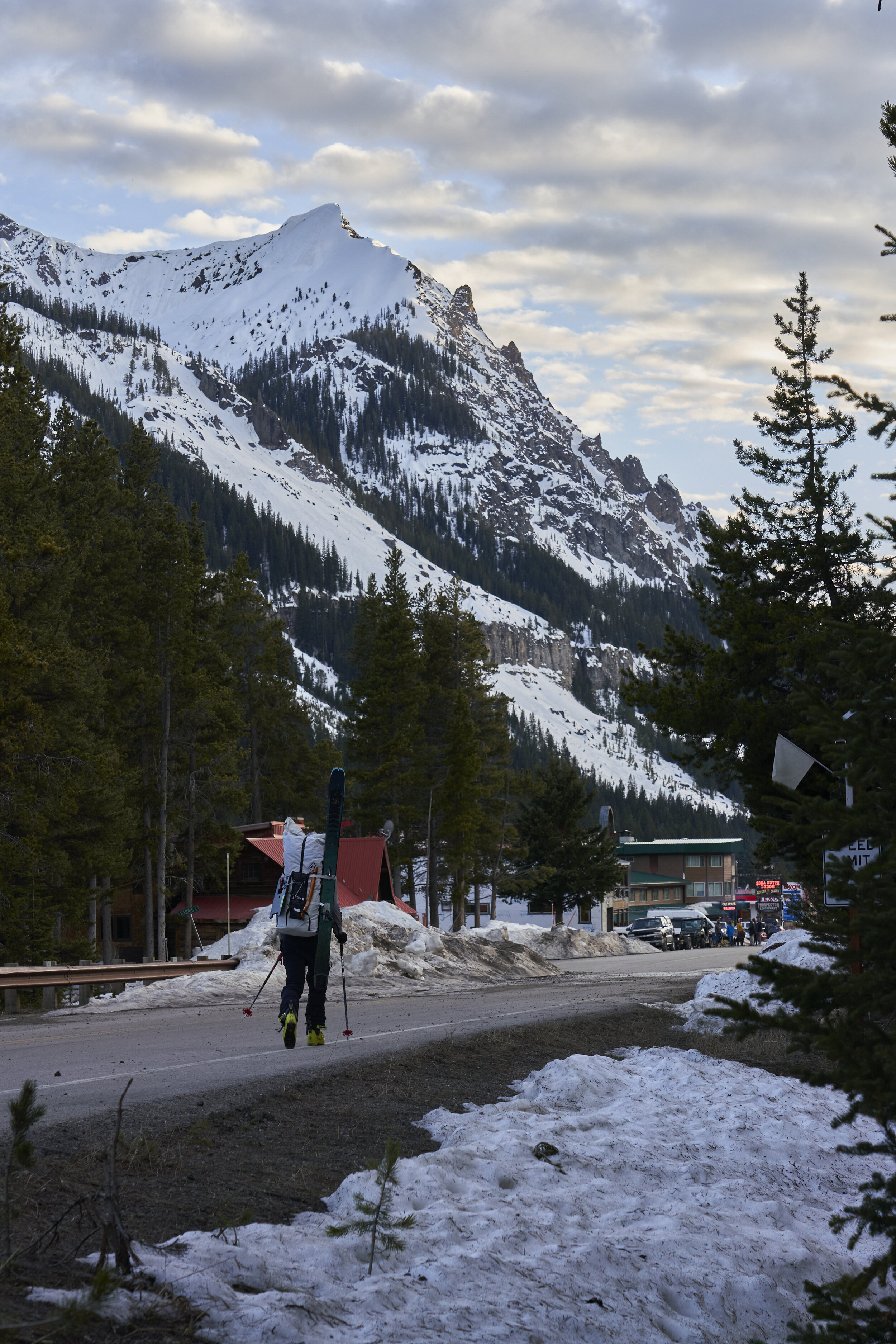Glacier Peak - The Patriarch, Catch a Fire Couloir, and Beckey Couloir
Beartooth Range, MT
Tucker skiing Catch a Fire Couloir
Dates: April 28-29, 2021
Strava Links: https://www.strava.com/activities/5219426753; https://www.strava.com/activities/5219454284; https://www.strava.com/activities/5219478503;
Day 1
Ever since I entered the world of ski mountaineering in SW Montana, the trio of steep couloirs on the North face of Glacier Peak have been dream lines for me. The photos and description of the The Patriarch are pretty vague in the “50 Classic Ski Descents of North America” but they are just descriptive enough to have really peaked my interest. I think the mystery almost adds to the allure of the line. I was able to obtain the highly coveted and out of print book, “Select Peaks of the Greater Yellowstone Ecosystem” which includes better photos and an awesome history of the ski mountaineering efforts on Glacier Peak. Noah Howell also has an awesome trip report on his website when he skied The Patriarch. With this info along with second hand reports from friends of friends, I felt equipped with enough info to successfully ski the Patriarch, along with the Beckey Couloir and Catch a Fire Couloir.
Originally, I was planning on going in solo to ski some lines on Granite Peak, but when Tucker let me know he was free for a few days and down to ski in the Beartooths, we shifted plans to the more menacing lines on Glacier Peak. The ski lines on Granite are serious and steep, but not quite on the same level as Glacier Peak. The lines on Glacier Peak have a very intimidating reputation surrounding them and to be honest, I wasn’t really planning on skiing them this season. However, Tucker is a great skier, super fit, and a very competent partner so I knew we should go for the mega lines on Glacier Peak. Especially, after hearing reports that a few, slightly higher profile ski mountaineers (Cody, Bjarne, Jim, and Hilaree) had skied The Patriarch the previous week. Our original plan was to prioritize the three couloirs on the North face of Glacier Peak (The Patriarch, Beckey Couloir, and Catch a Fire Couloir) but also to check out the lines on the west face of Glacier Peak and Garuda on Mount Villard. We went in with enough food and supplies for 3 days and 2 nights of camping and went heavy on the technical gear. We brought 2 ropes (30m 6.0 mm Mammut Glacier Cord and 65m 6.0 mm Petzl Purline) plus a set of nuts and a few knife blade pitons.
I had contacted the two guiding operations in Cooke City to see if they offered sled bumps to Goose Lake, but my efforts were fruitless and neither offered the service. Snowmobiles are allowed on the first 8 miles of the 15 mile approach to the base of Glacier peak, so they provide a huge help on the lengthy approach, especially with heavy packs. Tucker and I were fully planning on making the 15 mile approach under own power, but as luck would have it, a friend of ours, Andrew, happened to be in Cooke City at the same time with his sled. He very graciously offered to give us a sled bump out to Goose Lake. We left Bozeman at 4:00 AM and met Andrew at the Alpine Motel at 6:30 AM where we went through gear one last time and finished packing our backpacks. We rigged our 30m rope as a tow rope and Tucker graciously offered to get towed while I rode on the sled with Andrew. Snow conditions for the sled approach were primarily breakable crust, but Tucker managed to keep it upright the entire way in. I am very confident that I wouldn’t have faired as well. After a few overheating issues, we were at the wilderness boundary near Goose Lake around 9:30 am. Andrew coming in clutch with the sled bump easily saved us 3 hours on the approach.
We bid Andrew farewell and started the gradual uphill to Iceberg Pass. We made slow and steady progress to the top of Iceberg Pass and ripped skins in preparation to do a little skiing. Conditions were a mix of soft snow and breakable crust. I ate shit several times on the breakable crust as the heavy pack made the punch crust even more challenging to ski. We traversed around the base of the West face of Glacier Peak and the two main couloirs (Central Couloir and Jungst Notch Couloir) both looked pretty sun effected and filled with a lot of wet slide debris. We pretty much ruled these out and proceeded on with our approach to camp.
At last, we were at the base of the North face of Glacier Peak and I was absolutely blown away by the scenery. The sheer, vertical rock faces were nothing like I had seen anywhere in Montana and it looked like it was plucked out of the Alaska Range and dropped in the Beartooths. We found an awesome place to set up camp that had patches of timber to help block the wind and hang gear and a flat spot for the tent. We promptly set up the tent, unloaded all the overnight gear from our packs and headed up The Patriarch. Conditions were clear but temperatures were in the high 20s and the freezing levels were predicted to stay low until sunrise. The coming days were predicted to be much warmer, so we knew that we needed to seize the opportunity and attempt to ski The Patriarch on Day 1.
We left camp around 2:30 pm and started skinning to the base of Beckey Couloir. We were able to make it a decent ways up the base of the Beckey before we transitioned to booting. Conditions were great so far with knee deep soft snow with a nice, supportable base beneath it. Perfect conditions for both uphill and downhill travel. To get into The Patriarch, you ascend the lower portion of the Beckey and then climb the dividing ridge. From here, you fix a rope that you use to rappel into The Patriarch and will later be used to jug up and out of The Patriarch. We picked a point on the ridge, and left the confines of the Beckey to head towards it. At this point, booting got significantly more difficult as the sides of the Beckey Couloir were much steeper with softer snow. We got to the rocky outcropping we were aiming for and started rigging the rappel anchor. There weren’t any horns to sling like I was hoping, so we set up a 3 piece anchor with 2 nuts and a piton. I am very thankful we brought the nuts and pitons as I was pretty undecided before the trip. We used the 65m rope and tied a figure eight on a bight and rappelled into the lower slopes of the Beckey on 2 strands to add friction to the skinny rope. The 30m rope would have barely worked since you’d be able to make a single rope rappel, but it was nice to have the added insurance with the 65m. There are reports of past parties forgoing the rope to get into The Patriarch but it would have been very difficult to get into it without a rope as the ridge was rocky with very deep, unconsolidated snow surrounding the rocks.
I yelled “Off Rappel!” and Tucker performed his rappel and joined me at the base of The Patriarch. Below us, was a huge cliff band which is why you can’t approach it from the valley bottom. The cliff band sitting at the bottom also adds to the seriousness of the line as the entire couloir is definitely a “No Fall Zone”. As soon as we were into The Patriarch, it was immediately apparent why it’s one of the 50 Classics. It’s super asthetic with vertical walls on both sides and just getting into it requires an effort unmatched by any other ski line I’ve been on between the 15 mile approach and the rope work. We started booting up and conditions were more firm than in the Beckey, but still acceptable. We continued on and turned the corner of the upper dog leg. From here, the couloir gets significantly steeper as it approaches the upper 50 degree range. To our dismay, the conditions also transitioned to a stout, breakable crust. We were optimistic going into the trip that conditions in The Patriarch would be all time since the Beartooths picked up ~18 inches of snow a few days prior. However, this was not the case. After much discussion, we decided to keep trudging on and we made it to the top of the ridge that sits a few hundred feet below the summit. Of course, as soon as we hit the ridge the snow quality vastly improved. It took a little coaxing, but I drug Tucker up to the summit of Glacier Peak with me. There were a few false summits that were a little mentally taxing, but other than that, it was a straight forward ridge walk to get from the top of The Patriarch “proper” to the summit of Glacier Peak.
It was getting late in the evening at this point and we still had a considerable amount of very technical skiing ahead of us, so we quickly ate some food and took an obligatory summit selfie before clicking into our skis. The coverage was awesome on the ridge all the way to the top, so we were able to ski from the proper summit of Glacier Peak. We enjoyed the snow up high and skied down to the top of the Patriarch “proper”. From here, Tucker went first where we very cautiously worked our way through the uber steep, breakable crust in the top of The Patriarch. After a pretty gripping few hundred feet, we were through the upper section and into the lower portion of the dog leg where the snow was better (but still not good) and the slope angle eased up to the mid 40s. It still required very cautious skiing especially with the cliff band lying below us.
One at a time, we skied in pitches down to our fixed rope. The day was far from over, but I felt a huge wave of relief to have safely made it down The Patriarch in very challenging conditions. I brought along a Micro Traxion and a Tibloc to ascend the rope to get out of The Patriarch and back into the Beckey. It was probably overkill (compared to prussik cords) but it was very nice to have. After Tucker finished jugging out of The Patriarch, we quickly broke down our three piece anchor, coiled the rope, and clicked back into our skis to ski the lower portion of the Beckey back to camp. The sun had already set at this point, but we still had just enough light to ski back to camp without needing headlamps.
Tucker and I were super pumped to have knocked out The Patriarch on the first day of the trip and we discussed our options for the upcoming days while eating our gourmet, freeze dried dinners in the dark. The Garuda looked out along with the lines on the West Face, so we decided that we were going to ski Catch a Fire and Beckey and then head back to the truck. We had originally planned on staying another night, but it wasn’t supposed to freeze the following night and there was nothing else we were dying to ski.
Day 2
I brought my new MSR Advance Pro 2 tent which is a more like a 1-1/4 person tent than a 2 person tent, but I had what was probably the best night of sleep I’ve ever had in a tent. My alarm went off at 5:15 AM the next morning and I felt relatively rested. After Mountain Mochas (Starbucks Via & Hot Chocolate) and oatmeal, we were skinning shortly after sunrise en route to Catch a Fire Couloir.
Conditions in Catch A Fire weren’t great, but they were vastly better than The Patriarch the day before. The snow was variable and featured, but thankfully, there was no breakable crust. The booting got pretty laborious near the top as the slope angle increased and it got to the point that the leader was fighting pretty hard for each step. There wasn’t a cloud in sight and the snow was warming up fast due to the NE aspect, so it helped with the motivation to get to the top in a timely manner. We topped out around 9:00 AM, and quickly transitioned to ski down. Catch a Fire tops out a ways down the ridge from the summit, but it is a beautiful couloir, none the less, and a worthy objective on its own. The top of Catch a Fire is steep even for Beartooth standards, but thankfully the bar for steepness had been raised the previous day, so the descent felt “comfortably” challenging. We skied out of Catch a Fire and traversed hard skiers right to get to the base of the Beckey Couloir.
Thankfully, once we arrived at the base of the Beckey, it appeared to be much more shaded than Catch a Fire and we felt confident that we had enough time to safely ascend and ski it before things heated up too much. We enjoyed the fruits of the previous day’s labor, and cruised up our preexisting skin track and booter. Conditions in the Beckey stayed great and made for efficient booting and what we suspected would be quality skiing. The Beckey Couloir continues on to the summit but we transitioned ~150 ft shy of the summit once it got rocky. It’s beyond impressive that the legendary group of 90s ski mountaineers (Alex Lowe, Hans Saari, and Andrew Mclean), climbed the sketchy 5.7 rock in the upper portions of the Beckey all the way to the summit (and in ski boots!). There’s a great account of it in “Select Peaks of Greater Yellowstone”. After a precarious transition on steep slopes, it was time to ski our last line of the trip. Conditions in the Beckey we’re very conducive to steep skiing just as we had suspected from the ascent. We skied it all the way down to the apron below without hiccup and celebrated having skied all three prominent couloirs on Glacier’s north face in one short trip. Conditions definitely improved with each line we ticked off.
We made it back to camp around 1:00 PM and ate as much food as we could stomach to lighten our load on the return trip. We broke down camp and packed everything up and were skinning towards Iceberg Pass by 2:30 PM. The goal was to be back at the truck before dark. Our packs weren’t too much lighter than on the way in and the first hour really dragged on. It didn’t help that there wasn’t a cloud in the sky and temperatures were close to 50 degrees. It was mostly uphill from camp to Iceberg pass, but I knew it would be all downhill from there. Tucker managed to “skin” all the way to Iceberg Pass without skins. I tried it briefly, but I was slipping all over the place so Tucker was waiting on me the whole way out (Sorry Tucker!) since he was able to go so much faster on the flats and the slight downhills.
Three hours after leaving camp, we were on top of Iceberg Pass and transitioned where we were able to ski a considerable ways out to the headwaters of Goose Lake. At this point, we were pretty deadset on trying to get a ride back from someone with a sled and had settled on a $100 reward for anyone willing to drag our exhausted asses back to town. As the “depproach” miles ticked by, the monetary reward we were willing to offer r decreased. Once we got about 5 miles from town, we had decided that a snowmobile ride was no longer desired and we were committed to getting out under own power. I skinned out most the way while Tucker utilized his skinning sans skins approach and he graciously waited for me every few minutes. It’s a technique I definitely need to improve on to move faster on the long, rolling, downhill depproaches Montana is (in)famous for. Thankfully, we were able to click in our heels and ski out the last few miles. We were able to ski all the way to downtown Cooke City. It’s hard to describe, but it was such an amazing feeling walking down Main Street in Cooke City in ski boots, with skis on our backs, after having skied three of Montana’s most coveted lines. We made it back to the truck with plenty of daylight left to spare. Getting out of ski boots was almost as good as the cold-ish Coors Banquets waiting for us. It was a fantastic trip and I’m super thankful for having a great partner in Tucker to accompany me on the trip. I’ll definitely be back to ski some of the surrounding lines and maybe try to ski The Patriarch in better conditions.
P.S. Only 46 more to go, watch out CT.

